Walking as Art
Footwear
Shoes hold the key to human identity.
Sonja Bata, founder of the Bata Shoe Museum, Toronto (Trueheart
1995:C10)
Terry Gilliam (Monty Python)
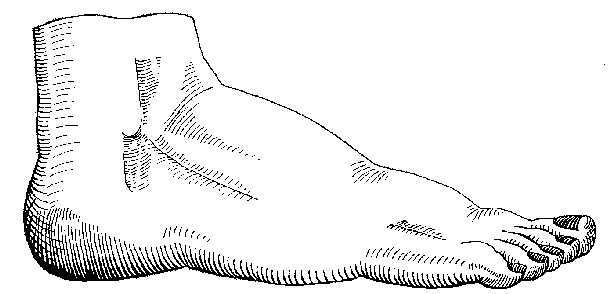 The Foot
The Foot
Humans were wearing shoes at least 40,000 years ago, according to scientists
who have examined the curled-up toes of an ancient skeleton.
Erik Trinkaus
and Hong Shang of Washington University in Missouri, measured the shape
and density of the toe bones from a 40,000-year-old skeleton found in Tianyuan
cave near Beijing.
They then compared them with those from 20th century urban Americans'
feet, late-prehistoric Native Americans and late-prehistoric Inuits.
The pair could make assumptions about footwear because shoes change
the shape of the foot.
A rigid sole meant toes curled far less than when barefoot and less
force was passed through the bones.
That created obvious differences in the three populations, according
to an article
in the New Scientist.
"Modern shoe-wearing Americans have wimpy little toes. Barefoot native
Americans have strong, large toes. Shoe-wearing Inuits lie somewhere in
between," Mr Trinkaus said.
The scientists said the Tianyuan toe bones were most similar to the
Inuits', indicating their owner regularly wore shoes.
Trinkaus,
E. (2005) Anatomical evidence for the antiquity of human footwear use.
Journal of Archaeological Science 32, 1515-1526
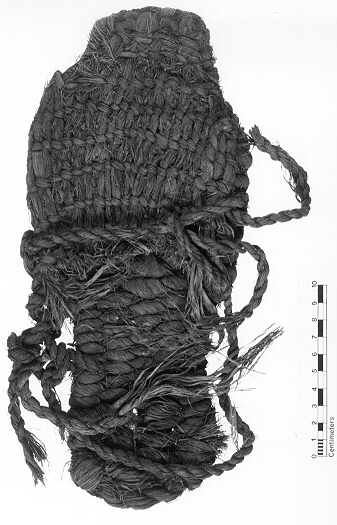 In
1938 archaeologist Luther Cressman (from the University of Oregon) excavated
at Fort Rock Cave, located in a small volcanic
In
1938 archaeologist Luther Cressman (from the University of Oregon) excavated
at Fort Rock Cave, located in a small volcanic
butte approximately half a mile west of the Fort Rock volcanic crater
in central Oregon. The Fort Rock Basin is the most northwesterly sub-basin
of the Great Basin, Western North America's vast intermontane desert.
Cressman found dozens of sandals below a layer of volcanic ash, subsequently
determined to come from the eruption of the Mt.
Mazama volcano 7500 years ago. Named for the site where they were first
found, Fort Rock-style sandals have since been
reported from ancient deposits in several Northern Great Basin caves.
 Fort
Rock sandals are stylistically distinct. They are twined (pairs of weft
fibers twisted around warps), and have a flat, close-twined sole, usually
with five rope warps. Twining proceeded from the heel to the toe, where
the warps were subdivided into finer warps and turned back toward the heel.
These fine warps were then open-twined (with spaces between the weft rows)
to make a toe flap. Cressman surmised that a tie rope attached to one edge
of the sole wrapped around the ankle and fastened to the opposite edge.
Fort
Rock sandals are stylistically distinct. They are twined (pairs of weft
fibers twisted around warps), and have a flat, close-twined sole, usually
with five rope warps. Twining proceeded from the heel to the toe, where
the warps were subdivided into finer warps and turned back toward the heel.
These fine warps were then open-twined (with spaces between the weft rows)
to make a toe flap. Cressman surmised that a tie rope attached to one edge
of the sole wrapped around the ankle and fastened to the opposite edge.
Most dated Fort Rock-style sandals are from Fort Rock Cave, but directly
dated sandals of this type are also known from Cougar Mountain and Catlow
Caves. Directly dated Fort Rock style sandals range in age from at least
10,500 BP to 9200 BP (based on dendrocalibrated radiocarbon ages). For
more information, refer to Connolly and Cannon 1999.
Directly dated Fort Rock-style
sandals, northern Great Basin.
|
14C
Age
|
Lab No.
|
Age Range (cal
BP, 1 sigma)
|
Dated
Material
|
Site
|
Reference(s)
|
|
9188±480*
|
C-428a
|
10,920-9650 BP
|
sagebrush
bark
|
Fort
Rock Cave
|
Arnold
and Libby 1951
|
|
8916±540*
|
C-428b
|
10,440-9380 BP
|
sagebrush
bark
|
Fort
Rock Cave
|
Cressman
1951; Bedwell and Cressman 1971
|
|
8308±43
|
AA-30056
|
9380-9240 BP
|
sagebrush
bark
|
Catlow
Cave
|
Connolly
and Cannon 1999
|
|
8510±250
|
UCLA-112
|
9840-9240 BP
|
tule
|
Cougar
Mtn. Cave
|
Ferguson
and Libby 1962; Connolly 1994
|
|
8500±140
|
I-1917
|
9530-9380 BP
|
sagebrush
bark
|
Fort
Rock Cave
|
Bedwell
and Cressman 1971
|
|
9215±140
|
AA-9249
|
10,360-10,020 BP
|
sagebrush
bark
|
Fort
Rock Cave?
|
Connolly
and Cannon 1999
|
|
8715±105
|
AA-9250
|
9870-9520 BP
|
sagebrush
bark
|
Fort
Rock Cave?
|
Connolly
and Cannon 1999
|
The commonly cited 9053±350 age for the "Fort Rock
sandal" is actually an average of these two dates, run on "several pairs
of woven rope sandals" (Arnold and Libby 1951:117). The weighted average
of these two ages produces an age range of 10,390-9650 cal BP.
Arnold,
J. R. and W. F. Libby 1951 Radiocarbon Dates. Science 113(2927):111-120.
Bedwell,
Stephen F. and Luther S. Cressman 1971 Fort Rock Report: Prehistory and
Environment of the Pluvial Fort Rock Lake Area of South-Central Oregon.
In Great Basin Anthropological Conference 1970: Selected Papers,
edited by C. Melvin Aikens, pp. 1-25. University of Oregon Anthropological
Papers 1. Eugene
Connolly,
Thomas J. and William J. Cannon 1999 Comments on "America's Oldest Basketry."
Radiocarbon
41(3):309-313.
Cressman,
Luther S. 1951 Western Prehistory in the Light of Carbon 14 Dating.
Southwestern
Journal of Anthropology 7(3):289-313.
Cressman,
Luther S. 1942 Archaeological Researches in the Northern Great Basin.
Carnegie Institution of Washingon Publication 538. Washington, D. C.
Ferguson,
G. J. and W. F. Libby 1962 UCLA Radiocarbon Dates. Radiocarbon 4:109-114.
Ötzi, Iceman of the Alps (3350-3300 BC)
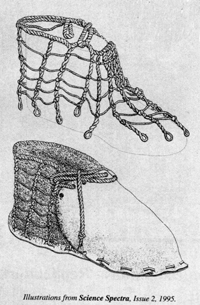
 On
September 19th, 1991, Helmut and Erika Simon, a couple from Nuremberg mountaineering
in the Ötztal Alps at a height of 3200 m discovered a
On
September 19th, 1991, Helmut and Erika Simon, a couple from Nuremberg mountaineering
in the Ötztal Alps at a height of 3200 m discovered a 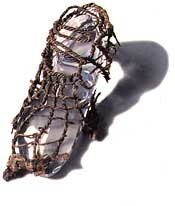 corpse,
the upper part of which protruded from the glacier. The well-preserved
body of a 30-to-45-year old man affectionately dubbed "Oetzi" for his resting-place
in the Oetz Valley, near the border with Austria in the Italian Alps, was
in a state of near perfect preservation. Oetzi was eventually dated to
3350-3300 BC (late Neolithic). The man of the ice wore shoes on his feet.
They consisted of an oval leather sole with turned-up edges held
in place with a leather thong. The soles are made of cowhide attached to
straps of a net like construction of knotted grass cords. A net woven out
of grass was attached to this on the inside to hold in place the hay that
was stuffed inside (like socks) as protection against the cold. The shoe
was closed with deer leather uppers attached to the sole by a plain-stitched
leather thong. The linden bark netting covered the tab on the leggin thus
holding the two together. Attached to the sole are upper pieces of leather,
presumably of fur, which formed the boot shape, tied at the ankle with
grass cords.Whereas the sole of the shoe is made of brown bear skin, the
uppers are made of deerskin. The uppers were closed using "shoe-laces".
He is now in the South Tyrol Museum in Bolzano in a special cold storage
chamber (kept at constant 0 to -6 C) .
corpse,
the upper part of which protruded from the glacier. The well-preserved
body of a 30-to-45-year old man affectionately dubbed "Oetzi" for his resting-place
in the Oetz Valley, near the border with Austria in the Italian Alps, was
in a state of near perfect preservation. Oetzi was eventually dated to
3350-3300 BC (late Neolithic). The man of the ice wore shoes on his feet.
They consisted of an oval leather sole with turned-up edges held
in place with a leather thong. The soles are made of cowhide attached to
straps of a net like construction of knotted grass cords. A net woven out
of grass was attached to this on the inside to hold in place the hay that
was stuffed inside (like socks) as protection against the cold. The shoe
was closed with deer leather uppers attached to the sole by a plain-stitched
leather thong. The linden bark netting covered the tab on the leggin thus
holding the two together. Attached to the sole are upper pieces of leather,
presumably of fur, which formed the boot shape, tied at the ankle with
grass cords.Whereas the sole of the shoe is made of brown bear skin, the
uppers are made of deerskin. The uppers were closed using "shoe-laces".
He is now in the South Tyrol Museum in Bolzano in a special cold storage
chamber (kept at constant 0 to -6 C) .
Researchers at Tomas Bata University in the Czech Republic are undertaking
a study of the Iceman's footwear. 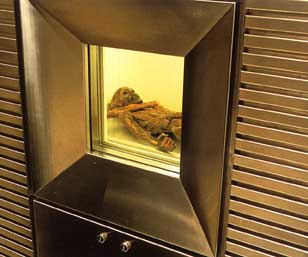 They
have constructed three pairs of animal skin shoes that replicate those
worn by Ötzi. Three members of the research team will visit an area
near Ötzi's discovery site, put on the replicas, and take a two-hour
hike. The shoes will be removed and studied. Afterwards, researchers intend
to donate them to an unnamed museum. The task of making replicas of his
shoes was not easy. Besides analyzing the various materials used to construct
the original shoes, researchers had to determine how the Iceman (or his
shoemaker) cut and tanned the skins. They also wondered whether the dried
grass still grew in the region. Analysis revealed that fats from animal
brains and livers were used to make the tanning solution, that a flint
rock was used to cut the skins, and that the same grass still grows. These
details were used in constructing the replicas.
They
have constructed three pairs of animal skin shoes that replicate those
worn by Ötzi. Three members of the research team will visit an area
near Ötzi's discovery site, put on the replicas, and take a two-hour
hike. The shoes will be removed and studied. Afterwards, researchers intend
to donate them to an unnamed museum. The task of making replicas of his
shoes was not easy. Besides analyzing the various materials used to construct
the original shoes, researchers had to determine how the Iceman (or his
shoemaker) cut and tanned the skins. They also wondered whether the dried
grass still grew in the region. Analysis revealed that fats from animal
brains and livers were used to make the tanning solution, that a flint
rock was used to cut the skins, and that the same grass still grows. These
details were used in constructing the replicas.
 Sandal, 8000 BC
Sandal, 8000 BC Soft
boots 500 AD
Soft
boots 500 AD
 Poulaine 1200
Poulaine 1200 Duck's
Bill 1500
Duck's
Bill 1500
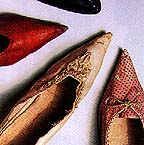 Slippers
1700
Slippers
1700 High-heel 1800
High-heel 1800
 1920
1920 1950
1950
 1960
1960 1970
1970

 Australian Aboriginal sandals
made from Emu feathers
Australian Aboriginal sandals
made from Emu feathers
As usual, the human race has one foot in the grave. And as our political,
military and environmental crises escalate, the second foot may follow.
Or, to borrow another podiatral turn of phrase, the other shoe will fall.
As we teeter on the edge of the abyss, it seems a good time to amuse ourselves
by taking a look
at, yes, feet. As a distraction from our army-booted march to disaster,
let's look at some of the
bizarre facts surrounding footwear.
What follows is an Emma Tom-ish exercise in shoe fetishism. It's a consequence
of my tripping
over a scholarly version of Imelda Marcos. Cameron Kippen, who speaks in
the richest of Scottish
brogues, is a lecturer in podiatry at the Curtin Institute of Technology
in Perth, where he teaches
about brogues of a different sort. Along with boots, slippers, sandals,
galoshes, wellies, high-heels
and clogs.
These days we seem inured to shock. Human proclivities and perversions
no longer raise eyebrows
or frisson. But when Cameron opened Pandora's shoe box and the filthy truth
about feet escaped, I
felt a mixture of fascination and repulsion.
For example, in the high Middle Ages, men began to wear long-toed shoes
called pigaches or
poulaines. Cameron explained that the fashion lasted more than 300 years,
during which the
extensions became longer and longer until walking was all but impossible.
Blatantly phallic, the
style required the toes of the shoe to be connected to the knee with a
chain so as to prevent
tripping.
And young bucks started to stuff wool and moss into the extensions to keep
them erect. To
emphasise the erotic implications of these medieval winklepickers, it was
customary to paint them
flesh pink. And allow them to flap, Cameron notes, with lifelike mobility.
Were talking about the ends of the feet being extended by up to 60cm. Small
bells were often
attached to the end of the poulaine to indicate that the wearer was a willing
partner in sexual frolic.
Playing footsie under the table became increasingly rampant. While boring
conversations were
being held over the meal, the poulaines were being employed under the petticoats
and between the
thighs of female guests. Consequently even a simple three-course dinner
could become
multi-orgasmic.
Polite society was outraged by the poulaines and youths were chastised
for standing on street
corners waggling their toes suggestively as women walked by. Little wonder
that the Catholic
Church saw poulaines as a threat to virtue, chastity and decency. Apart
from anything else, they
physically prevented men from kneeling in prayer.
Branding the shoes as Satan's curse - or Satan's claw - the Vatican passed
laws against them.
Nonetheless they maintained their popularity, even when the clergy insisted
that the Black Death
was God's revenge for, yes, a style of shoe. (Incidentally, few women wore
them because, at the
time, members of their gender were being persecuted as witches if they
wore unusual clobber. And
a pair of poulaines was enough to have you burned at the stake.)
According to Cameron, what shooed these shoes was the death of Duke Leopold
II of Austria, who
died when his poulaines impeded him from escaping assassins. Another factor
was French king
Charles VIII's polydactylism - he had six toes on each foot. To accommodate
them comfortably
required broad, square-toed shoes that helped change the fashion.
As erotic as the poulaine, the duck's bill shoe was broad enough to accommodate
even Charles
VIII's feet. They were as much as 30cm wide, forcing wearers to adopt a
waddling gait. The uppers
were made from silks, brocades and velvet and the shoes were heavily padded,
puffed and
embroidered.
The upper of the shoe had fine cuts in the leather, says Cameron, to show
the coloured hose or
sumptuous lining beneath. Often the shoes were lined with soft fur to resemble
pubic hair and as the
foot moved, skin could be observed through the opening and closing slits,
vagina-like.
And to think that, as a bodgie in the 1950s, I thought I was being outrageous
when I had a duck's
bum haircut and a pair of blue suede shoes.
For centuries, shoes tended to be largely rationed to the high and the
mighty, to pharaohs, kings
and courtiers. Even when they became more common in the Christian era,
they remained expensive
and exclusive. Costs were so prohibitive, people bequeathed their footwear
to family and loved ones,
says Cameron. Hence the saying, following in your father's footsteps.
Ancient Greek women of ill repute often wore elevated sandals to attract
men's attention. According
to Cameron, this led to a sexy wiggle that created an audible clacking
when walking. Which, in due
course, must have produced an almost Pavlovian response in members of my
weak and suggestible
sex.
But the modern high heel evolving into the stiletto seems to derive from
Catherine de' Medici in
16th-century Florence. Diminutive in stature, she wore high heels to her
wedding - the style
becoming an instant success.
Down the track, Louis XIV of France became fanatical about them and forbade
any other than the
privileged classes from wearing high heels, on penalty of death. But then,
the Sun King was also
short and needed all the help he could get.
Cameron explains that the connection between sexuality and the foot originates
in our species' bold
decision to walk upright. Apparently our bipedal stance has influenced
the anatomical development
of what Cameron calls the wobbly bits - buttocks, bosoms, tummies and hips.
And where
quadrupeds largely hide their sexual bits and pieces, we uprights are,
one and all, flashers.
Moreover, we're the only species able to copulate standing up and facing
each other. Which recalls
a joke ``Diamond Jim'' McLelland once told me. Why do Methodists disapprove
of having f---s in
darkened doorways? Because it might lead to dancing.
Wilder Penfield, a 20th-century neurosurgeon, identified the parts of the
brain responsible for
orgasmic activity - and found they lay in close juxtaposition to the section
responsible for feet.
Thereby confirming Freud's belief, says Cameron, of a strong link between
feet and sexuality.
But enough of this. I feel a strong compulsion to rush off and buff my
shoes. Those of you wanting to
put your toes into other people's business can read Cameron's e-book on
the history of footwear at:
www.podiatry.curtin.edu.au/history.html. For my own part, after burnishing
my shoes to
maximum brightness, I shall take a cold shower.

Andy
Warhol (who suffered from St. Vitus Dance)
 Andy
Warhol was born Andrew Warhola in Pittsburgh, Pennsylvania, as the son
of immigrants from Ruthenia, where the current boundaries of Poland, Slovakia,
Hungary, Romania and the Ukraine meet. His father, Andrej, who travelled
much on business trips, died when Warhol was 13. When he was eight (1936),
according to his mother Julia, he caught rheumatic fever which developed
into chorea (or St
Vitus Dance). In the quixotic Philosophy, he calls it a nervous
breakdown. One should remember, when trying to take his books at face value,
that he didn't entirely write them, and that he was a liar.) Biographer
Bockris reports that Andy came down with chorea in the autumn of 1938,
and that illness kept him away from school, an invalid at his mother's
side; he occupied a bed off the kitchen for a month. Symptoms of chorea
included skin blotches and uncontrolled shaking. Both echoed in Warhol's
future, and though he left no direct verbal commentary about what it felt
like to shake or to endure dermatological disfigurement, in his mature
artworks he refracted these experiences, letting stigma reverberate in
painting, film, and performance. Tese later artistic recastings of St.
Vitus' Dance represent childhood trauma's consummation, cancellation, and
vindication. He found it difficult to control his hand to write or draw
and was forced to stay in bed for a month. During this time, his mother
provided him with a steady supply of coloring and comic books, magazines,
and paper dolls, which enabled him to continue his art-making despite his
condition. While incapacitated he played with a Charlie McCarthy doll and
made paper cutouts, cultivating early the propensity for fantasy which
characterized his personality, Besides altering his birth date and name,
Warhol underwent plastic surgery in the 50's to trim his bulbous, red nose
but was angered when the operation failed to lend him the glamour he so
desperately desired. Also at this time he began dreaming of being a Hollywood
star and even wrote to some of his favorite celebrities. He was an albino,
with blotchy skin, and was taunted as Spot by his schoolmates. He had linguistic
problems stemming from his home environment. At college his fellow students
thought he had "a childlike duality about him". He was still living with
his mother until the early '70s.
Andy
Warhol was born Andrew Warhola in Pittsburgh, Pennsylvania, as the son
of immigrants from Ruthenia, where the current boundaries of Poland, Slovakia,
Hungary, Romania and the Ukraine meet. His father, Andrej, who travelled
much on business trips, died when Warhol was 13. When he was eight (1936),
according to his mother Julia, he caught rheumatic fever which developed
into chorea (or St
Vitus Dance). In the quixotic Philosophy, he calls it a nervous
breakdown. One should remember, when trying to take his books at face value,
that he didn't entirely write them, and that he was a liar.) Biographer
Bockris reports that Andy came down with chorea in the autumn of 1938,
and that illness kept him away from school, an invalid at his mother's
side; he occupied a bed off the kitchen for a month. Symptoms of chorea
included skin blotches and uncontrolled shaking. Both echoed in Warhol's
future, and though he left no direct verbal commentary about what it felt
like to shake or to endure dermatological disfigurement, in his mature
artworks he refracted these experiences, letting stigma reverberate in
painting, film, and performance. Tese later artistic recastings of St.
Vitus' Dance represent childhood trauma's consummation, cancellation, and
vindication. He found it difficult to control his hand to write or draw
and was forced to stay in bed for a month. During this time, his mother
provided him with a steady supply of coloring and comic books, magazines,
and paper dolls, which enabled him to continue his art-making despite his
condition. While incapacitated he played with a Charlie McCarthy doll and
made paper cutouts, cultivating early the propensity for fantasy which
characterized his personality, Besides altering his birth date and name,
Warhol underwent plastic surgery in the 50's to trim his bulbous, red nose
but was angered when the operation failed to lend him the glamour he so
desperately desired. Also at this time he began dreaming of being a Hollywood
star and even wrote to some of his favorite celebrities. He was an albino,
with blotchy skin, and was taunted as Spot by his schoolmates. He had linguistic
problems stemming from his home environment. At college his fellow students
thought he had "a childlike duality about him". He was still living with
his mother until the early '70s.
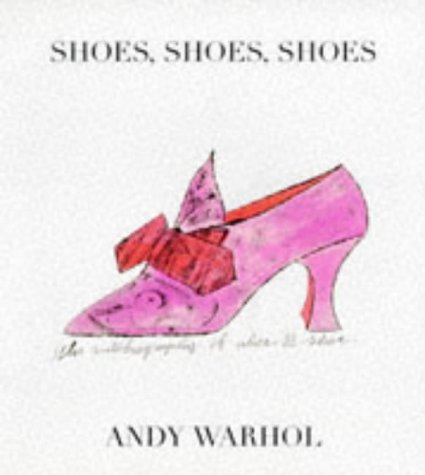 Shoes, shoes, shoes (book cover)
Shoes, shoes, shoes (book cover)
His original aspiration was to be a tap dancer, like his first idol,
Shirley Temple. Coming down with chorea, he became a sort of
dancer. The uncontrolled shaking, at first undiagnosed, leading
others to think him clumsy and febrile, took the Shirley fantasy
somewhere dark: tap is conscious, while St. Vitus' Dance is
hapless. The debate that will later rage over whether Warhol
made his own art, or whether he just had assistants do it, begins
with the chorea question: who controls Andy's physical
movements? His entire career, he will want to pretend not to be
their author. From the age of eight he understood possession: and
therefore he would revise the myth of artistic inspiration, whether
demonic or aetherial, and reconceive his body as a machine
transmitting movements that bypass consciousness and willpower,
that automatically repeat, and that embarrass. When he was a
college student at Carnegie Tech, studying art and design, he
joined the Modern Dance Club, consisting entirely of young
women, himself excepted. Arriving in New York, he would live
with dancers. His films feature dancers, such as the
aforementioned 1965 portrait of Paul Swan—more Gloria
Swanson than Rudolf Nureyev. Another dancer who would
illustrate, for Warhol, the confusion between deliberate gesture
and unwilled spasm was Freddy Herko, who appeared in several
early films, and who literally danced himself to death (suggesting a
vestige of Totentanz in St. Vitus' Dance): Freddy put Mozart's
Coronation Mass on the hi-fi and leaped out the window.
Andy's St. Vitus' Dance (and the sickbed time spent with his
mother) may not have sent him melodramatically into death's
arms, but it altered his sense of touch—heightening it, turning it
into a difficulty not lightly to be engaged. Thereafter he preferred
not to be touched; hyperaesthetic, Andy as an adult would visibly
recoil when a person attempted a handshake, a hug.
After St. Vitus' Dance, with its erratic movements, Andy next
would confront stillness. His father died when Andy was thirteen.
According to Julia, her husband drank poisoned water: "Andy
was young boy when my husband die. In 1942. My husband
three years sick. He go to West Virginia to work, he go to mine
and drink water. The water was poison. He was sick for three
years. He got stomach poisoning. Doctors, doctors, no help."
Andy would remain fascinated by motionlessness—resting
bodies, arrested by photography; his movies (which he and
assistant Gerard Malanga called "stillies") preferred static objects
and near-motionless individuals. The film moved, but the subjects
didn't. Nor do boxes or paintings move. The only thing moving, in
much of Warhol's art, is time, lapping over icons.
Andy was terrified of his father's dead body: downstairs, laid out
for three days, as was customary (the family was Byzantine
Catholic). Andy refused to pay his respects. He hid under his
bed. Death, he now understood, was permanent stillness; until
then, it might not have occurred to him that motion, a St. Vitus'
affliction he'd wanted to stop, would eventually halt forever.
Andrej's dead body, with Julia sitting beside it, proved motion to
be not such a bad thing.
HC Westermann
The
Last Ray of Hope, 1968-a pair of Westermann's Marine-issue boots, polished
and waxed again and again to a perfect, obsidian-like blackness, in homage
to Maxim Gorky's remark that a strong pair of boots "will be of greater
service for the ultimate triumph of socialism than black eyes".
 Andy Warhol Pump
Andy Warhol Pump
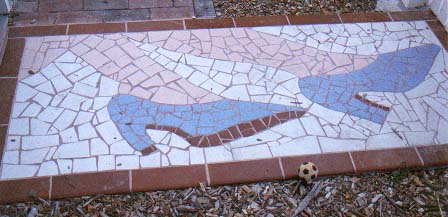
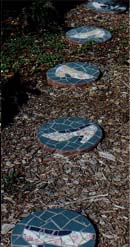
 mosaics
mosaics
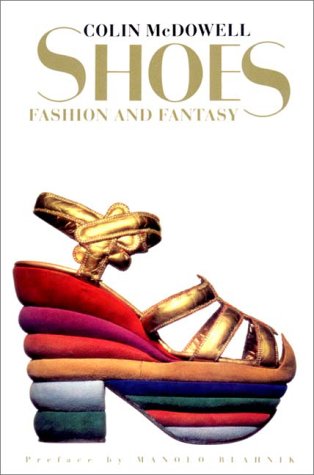 (book
cover)
(book
cover)
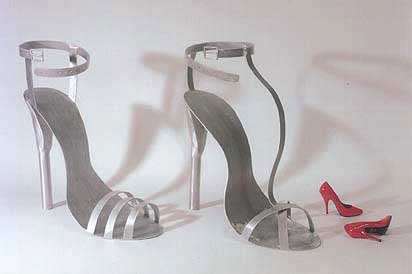 "High Heel Shoes
#1 & #2" (32x31x14) & (32x28x13), welded aluminum
"High Heel Shoes
#1 & #2" (32x31x14) & (32x28x13), welded aluminum
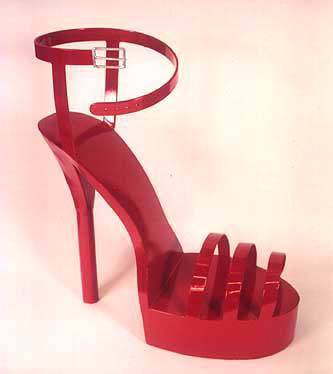 "High Heel Shoe
#4" (39x27x16), steel & enamel
"High Heel Shoe
#4" (39x27x16), steel & enamel
 Shoe #4 at home
in Indian Wells, California
Shoe #4 at home
in Indian Wells, California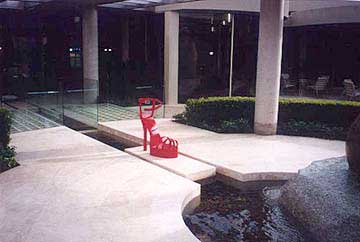
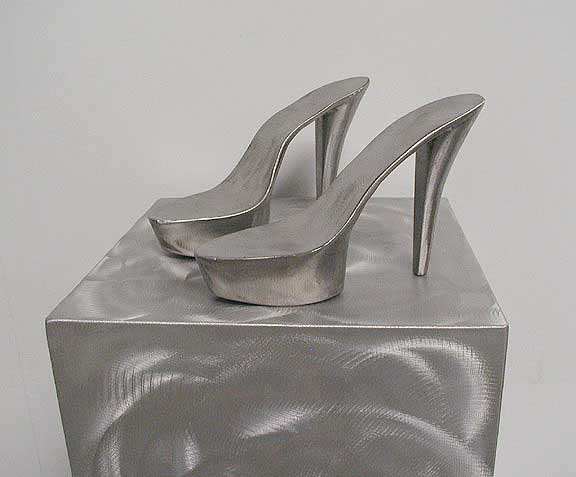 "wearable" high
heel shoes in stainless steel
"wearable" high
heel shoes in stainless steel
 3 Foot Shoe private
collection, 36x29x12"
3 Foot Shoe private
collection, 36x29x12"
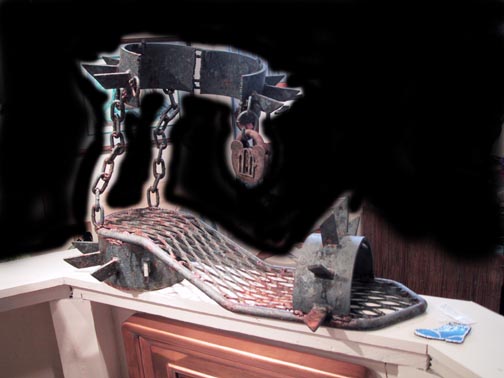 Spikey 26x17x10.5"
metal work
Spikey 26x17x10.5"
metal work
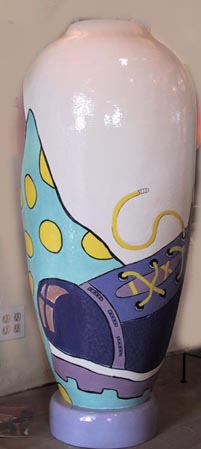 Stepping
into the Millennium, 48" vase
Stepping
into the Millennium, 48" vase 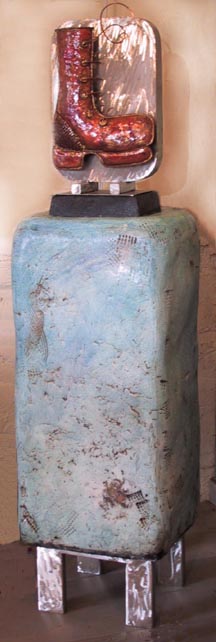 Boot safe
Boot safe
 Lacy, metal wall
sculpture
Lacy, metal wall
sculpture 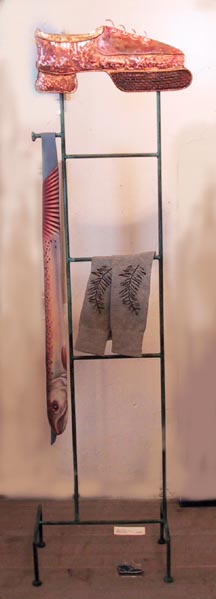 Shoe Stand
Shoe Stand 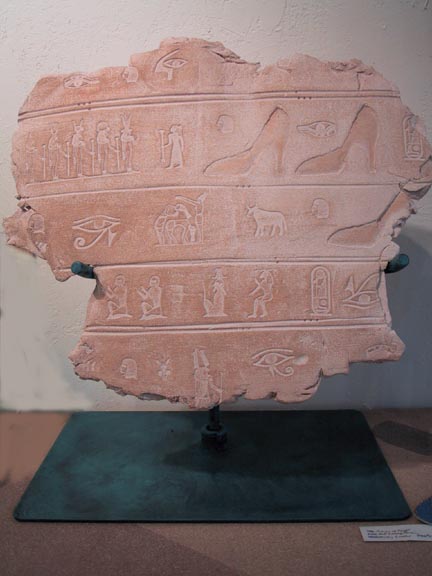
Ladies of Egypt , Ceramic and metal, 16x20x10"
 American Shoes,
giclee on canvas
American Shoes,
giclee on canvas
 "Ice Cream
Heels", Limited edition print
"Ice Cream
Heels", Limited edition print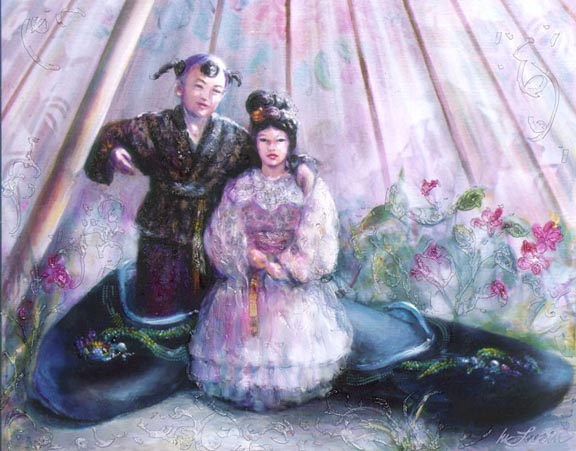 Proposal, giclee on canvas
Proposal, giclee on canvas
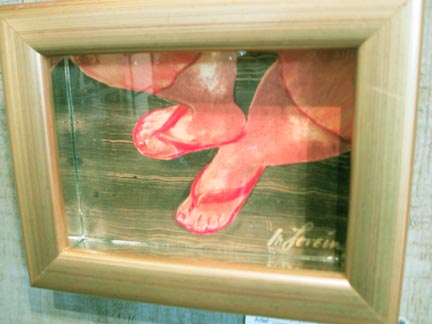 Look Down
in Color, monotype
Look Down
in Color, monotype
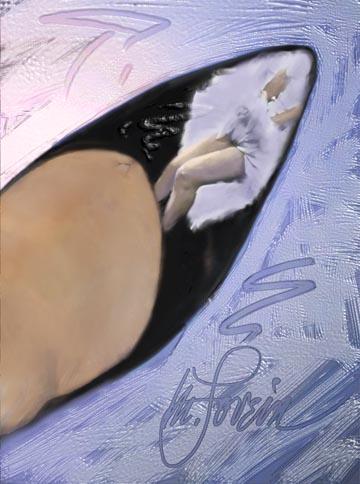 Reflection
, giclee
Reflection
, giclee
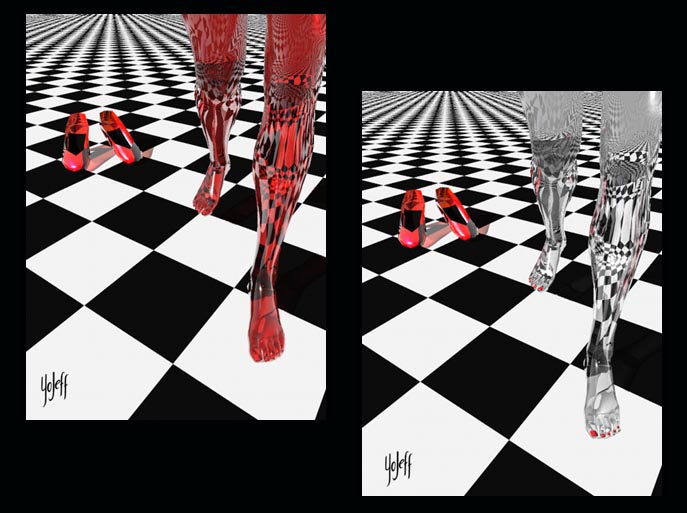
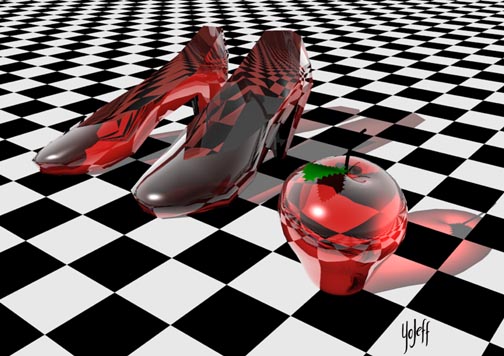 Red glass shoe
Red glass shoe
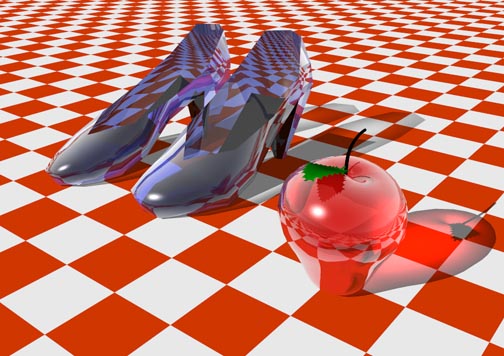 Blue glass shoe
Blue glass shoe
Annie Ball
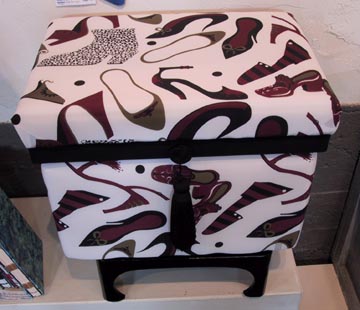 Silk covered
tea box
Silk covered
tea box
Patty Van Asperen
 Blue
Descending Heels, fused glass bowl
Blue
Descending Heels, fused glass bowl
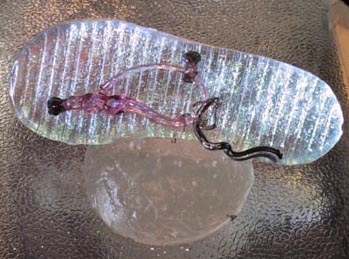 Glass slipper
Glass slipper
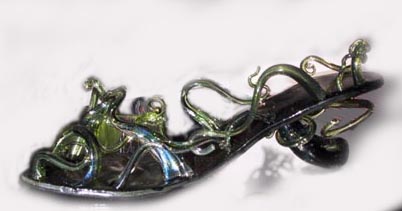 Da Vine, glass
Da Vine, glass
 Petroglyph
high heel, rock
Petroglyph
high heel, rock
Darrell Hill
 Sunset Boot, 3D
with oil paint
Sunset Boot, 3D
with oil paint
Melba
Boyd
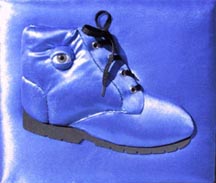 Blue Man
Shoe
Blue Man
Shoe
Yayoi Kusama (b. 1929)
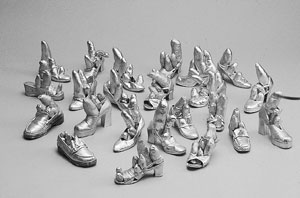 Silver Shoes (1976-77)
Silver Shoes (1976-77)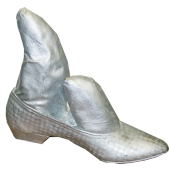
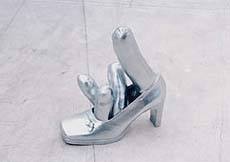


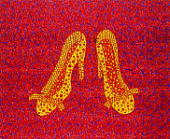 1999
1999
 2002
2002
Yayoi Kusama was born 22 March 1929, in Japan. Kusama's paintings, collages,
sculptures, and environmental works all share an obsession with repetition,
pattern, and accumulation. Hoptman writes that "Kusama's interest in pattern
began with hallucinations she experienced as a young girl--visions of nets,
dots, and flowers that covered everything she saw. Gripped by the idea
of 'obliterating the world,' she began covering larger and larger areas
of canvas with patterns." Her organically abstract paintings of one or
two colors (the Infinity Netsseries), which she began upon arriving in
New York, garnered comparisons to the work of Jackson Pollock, Mark Rothko,
and Barnett Newman. Starting in 1967 she became involved in performance-based
work, and by the late '60s the happenings in which she participated were
receiving much more attention in the popular press than in the art magazines
that had previously reviewed her work. In the early '70s Kusama traveled
between Japan and the United States several times, and she eventually remained
in Japan. During the mid '70s Kusama was hospitalized for psychological
problems, and in 1977 she took up long-term residence at the Seiwa Hospital
in Tokyo, where she set up a studio and has continued her work as an artist.
Diane McLean
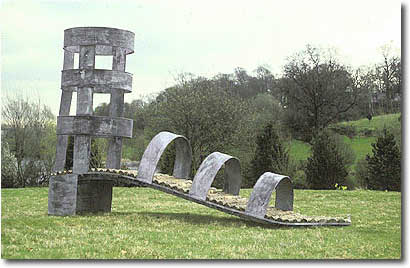 Shoe
(Roman sandal), University of Stirling, Scotland
Shoe
(Roman sandal), University of Stirling, Scotland
Lobbs of London

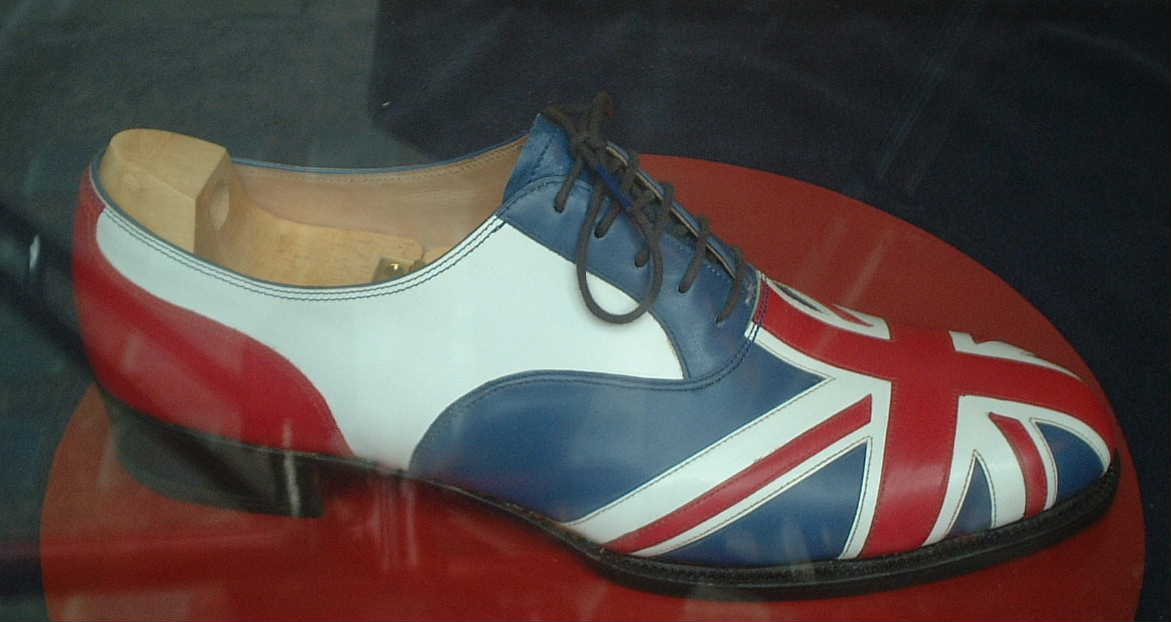 Lobb's of London: Jubilee Shoe, 2002
Lobb's of London: Jubilee Shoe, 2002
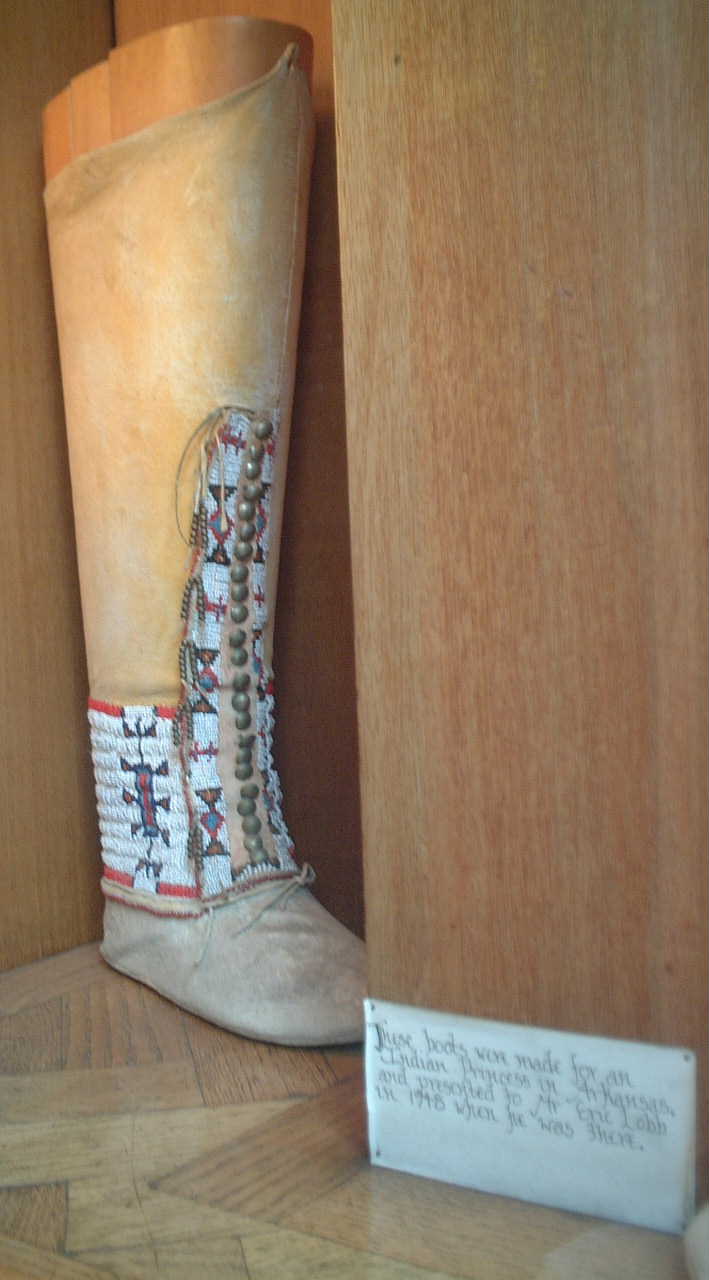 Boots made for
an Indian Princess in Arkansas and presented to Mr. Eric Lobb in 1948.
Boots made for
an Indian Princess in Arkansas and presented to Mr. Eric Lobb in 1948.
Roman Shoes
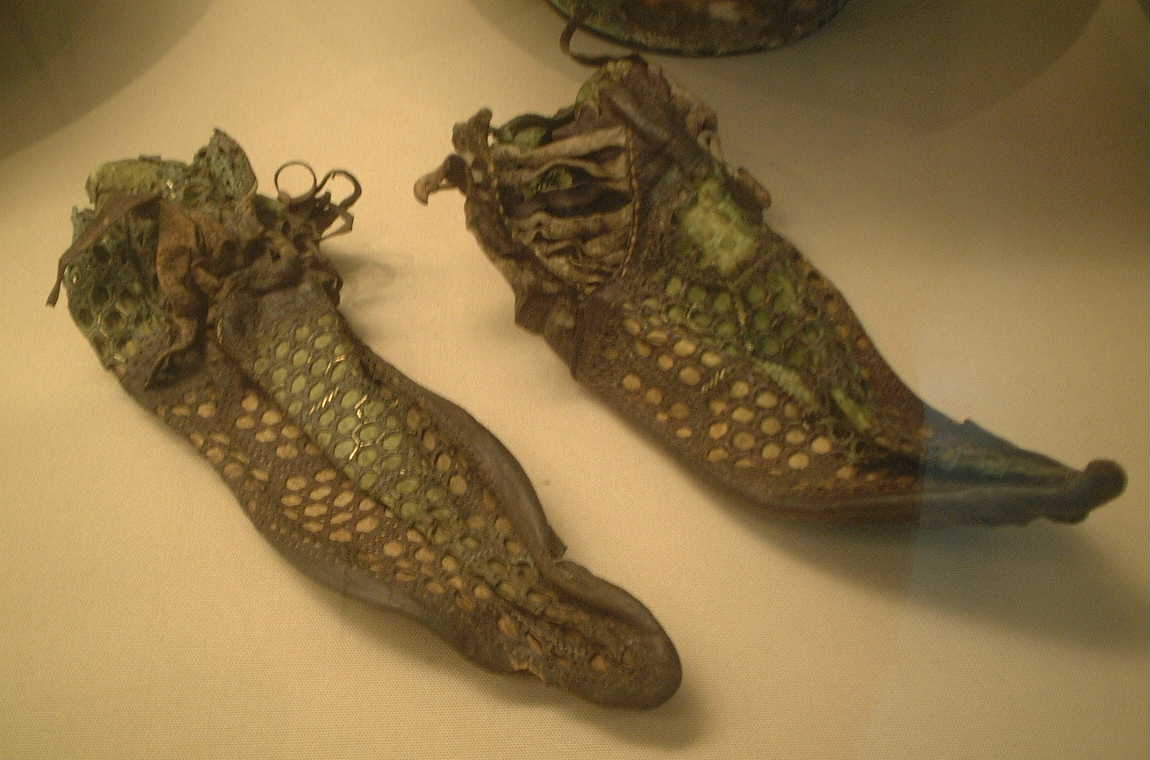
Adult woman's shoes found at archaelogical excavation at Southfleet
(Springhead), Kent in 1801. Originally purple with a pale lining visible
through the openwork and gilded metal thread embellishing the pattern (British
Museum, 2nd-3rd Century AD)

Roman child's leather hobnailed sandal (caliga) with decorative
openwork upper (Bank of England/British Museum)
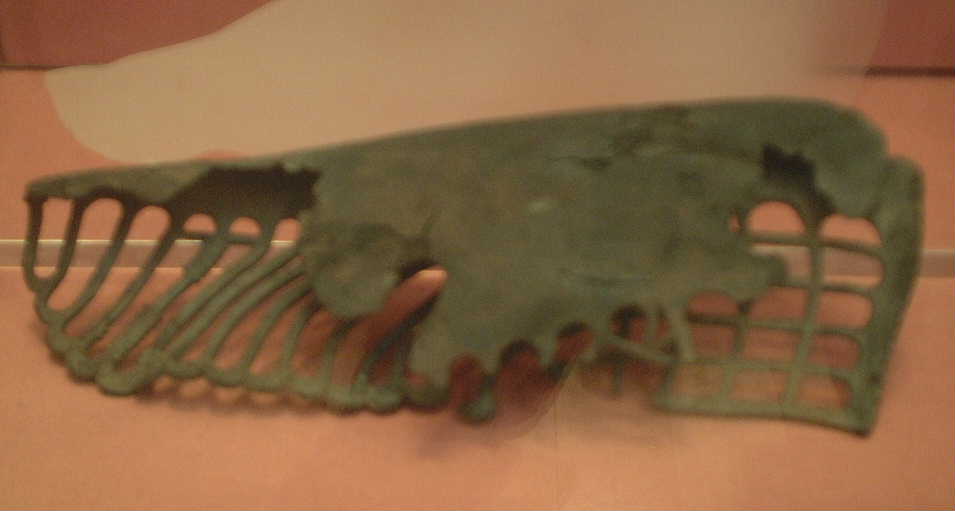
Light leather Roman shoe known as a carbatina (British Museum)
Chinese Paper Shoes
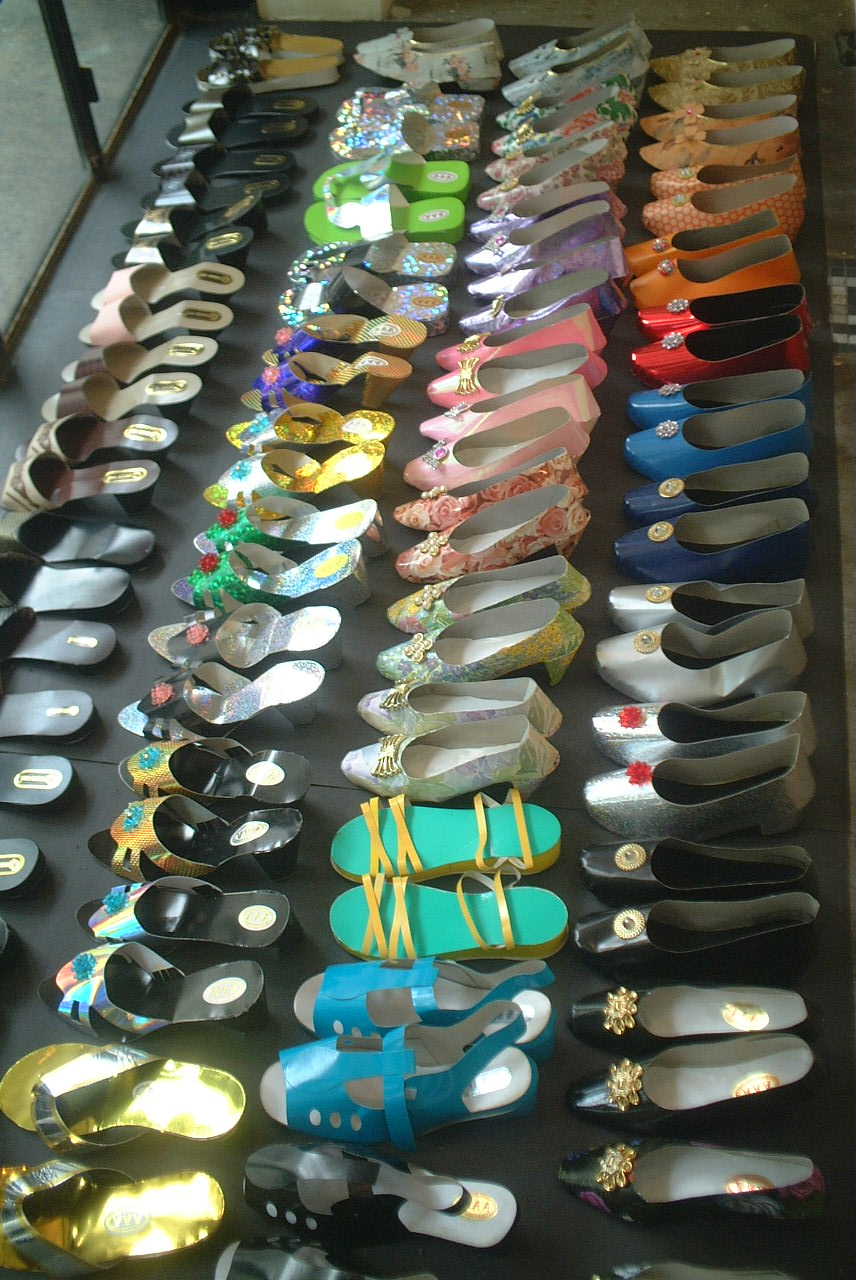
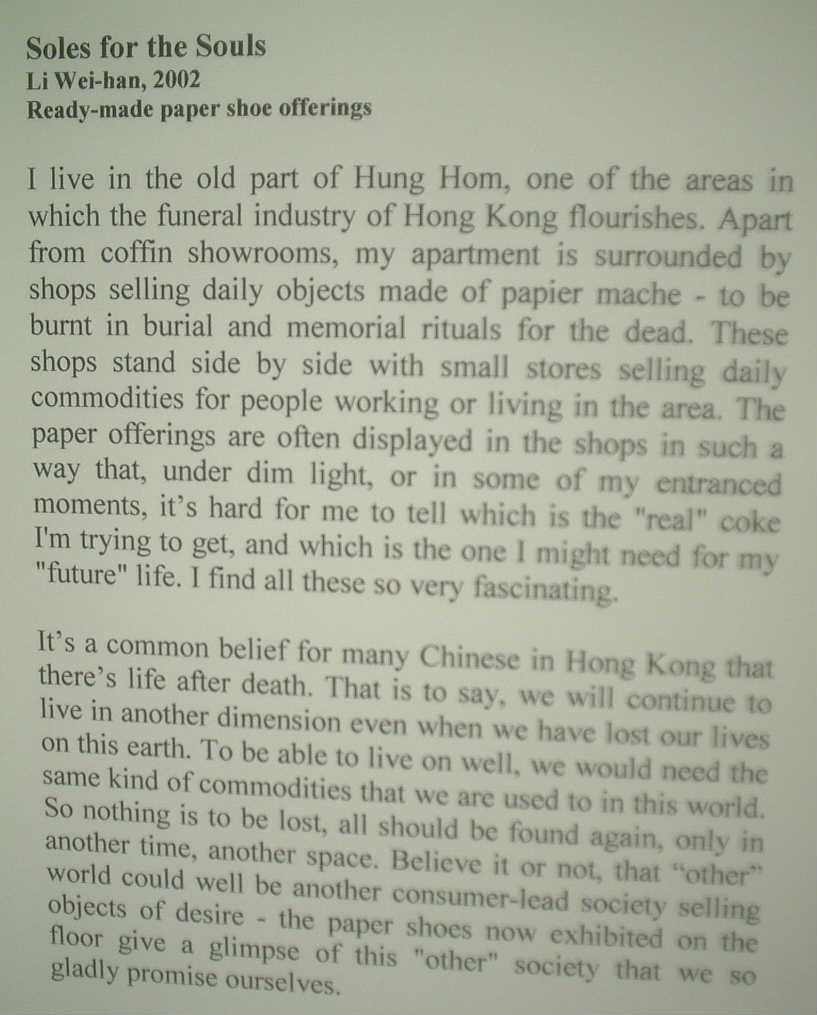
High-heeled three-wheeler


 Holy Feet
Holy Feet
Veldhoen took the photographs of the feet while travelling in India
in 1996. Feet are sacred in India and they also carry great importance
for her: Feet take you everywhere in life, they are the number one means
of transport. As the naked foot is in direct contact with the earth, I
believe it passes on personal strength and aura to the trodden ground.
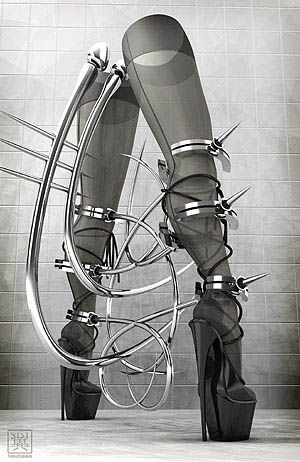
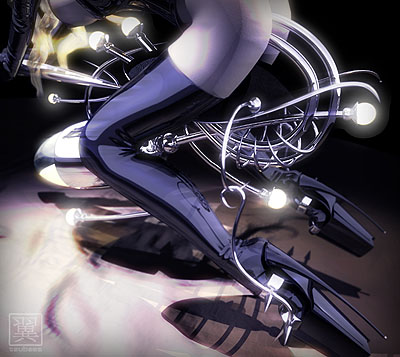


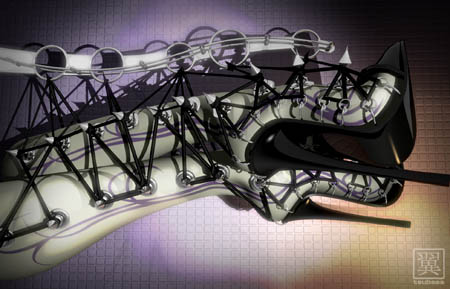


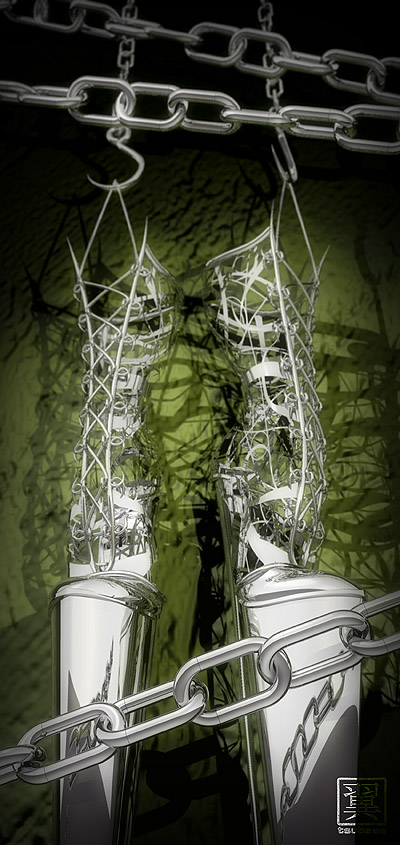

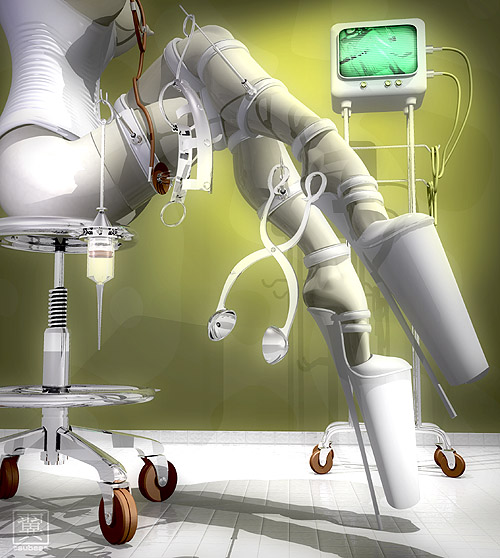


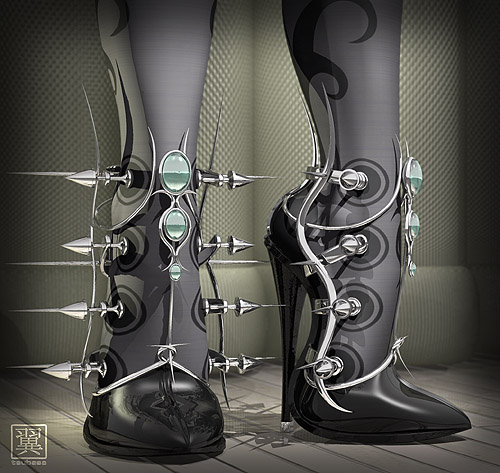
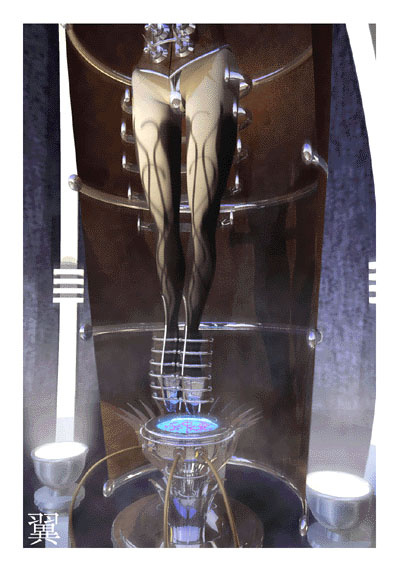







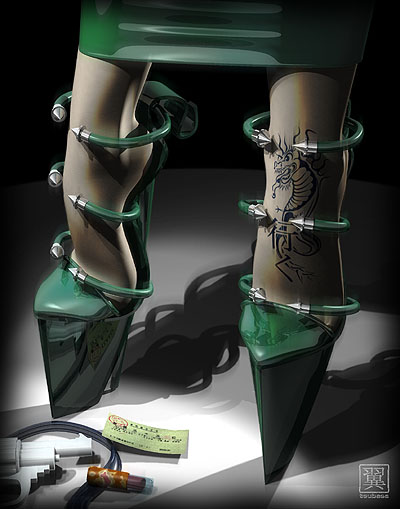



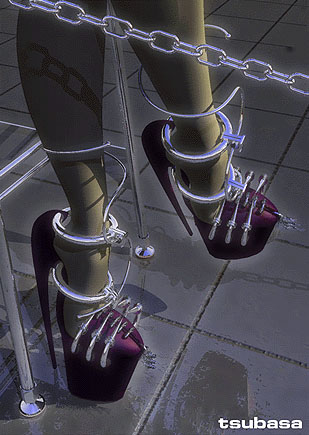
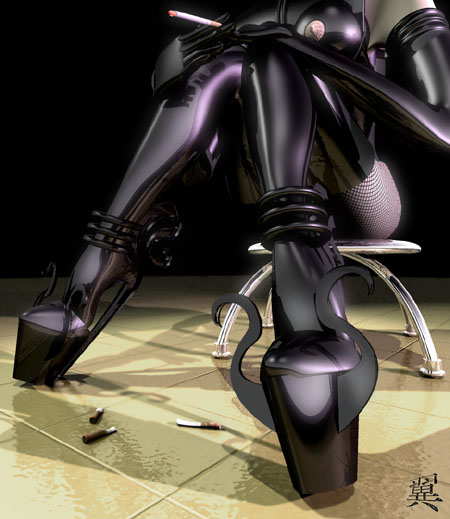



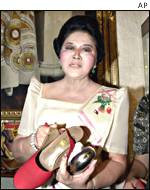

The world's best-known shoe collector, former Philippine First Lady
Imelda Marcos, opened a museum in 2001, in which most of the exhibits are
her own footwear.
The Footwear Museum in Barangay San Roque, Marikina
City, Manila (a district known as the shoe capital of the Philippines)
contains hundreds of pairs of shoes, many of them found in the presidential
palace when Imelda and her husband, President Ferdinand Marcos, fled to
Hawaii in 1986.
 "This
museum is making a subject of notoriety into an object of beauty," Mrs
Marcos told reporters.
"This
museum is making a subject of notoriety into an object of beauty," Mrs
Marcos told reporters.
The museum management hopes it will help attract tourism to Marikina,
"They went into my closets looking for skeletons, but thank God, all they
found were shoes, beautiful shoes," a smiling Mrs Marcos said, wearing
a pair of locally made silver shoes for the day.
"More than anything, this museum will symbolise the spirit and culture
of the Filipino people.
"Filipinos don't wallow in what is miserable and ugly. They recycle
the bad into things of beauty," she said.
The exhibits include shoes made by such world-famous names as Ferragamo,
Givenchy, Chanel and Christian Dior, all size eight-and-a-half. The museum
also houses traditional shoes from different countries, as well as footwear
of President Gloria Macapagal-Arroyo, former Presidents Ferdinand Marcos
and Fidel Ramos, some senators and athletes.
During her time as first lady, Mrs Marcos was famed for travelling the
world to buy new shoes at a time when millions of Filipinos were living
in extreme poverty. She reportedly owned over 3000 pairs of shoes
when she was forced to flee the presidential estate. President Marcos'
successor, Corazon Aquino, ordered many of Mrs Marcos' shoes to be put
on display as a demonstration of her extravagance.
While Ferdinand Marcos died in exile, neverseeing his country again
after his fall from grace in a popular uprising, his widow has reintegrated
herself into Philippines life. She has twice run for president and analysts
say she may run for mayor of Manila next May.
Some 200,000 people work in the Marikina district making shoes, with
roads carrying names such as Sandal Street and Slipper Street.
I did not have three thousand pair of shoes. I had one thousand and
sixty.
Everybody kept their shoes there. The maids...everybody.
Our opponent (Cory Aquino) does not put on any make up. She does
not have her fingernails manicured. You know gays. They are for beauty.
Filipinos who like beauty, love, and God are for Marcos.
I get my fingers in all our pies. Before you know it, your little
fingers including all your toes are in all the pies.
Shoes in Museums
In 1998 the Museum of London's exhibit, Sole City: London Shoes From the
1st to the 21st Century, featured contemporary
British shoe designers and explored the designers' penchant for offshore
production. Sogetsu Ikebana School's 1999 Sogetsu Hall exhibition, The
Art of The Shoe, paid tribute to the life and works of Salvatore Ferragamo.
The shoes, exhibited amidst green bamboo structures, were designed from
1927 to 1960, the year of his death.
Museums like France's International Shoe Museum (Le Musée International
de la Chaussure) and Offenbach's German Shoe Museum (Deutsches Ledermuseum
/ Schuhmuseum) have helped preserve centuries of shoe design history. Besides
legacy shoes, the German Shoe Museum features contemporary footwear debuted
at the International Shoe Fair, a trade event in Düsseldorf.
In addition to European and non-European shoe exhibits, 20th century
artists like Günther Uecker, Allen Jones, Caroline Bahr, Gisela Cardaun
and Gaza Bowen, who see the shoe as an art form, are also featured. The
International Shoe Museum showcases 8,000 rare and original items from
around the world, as well as exhibits by contemporary designers.
 Toronto's
Bata Shoe Museum's exhibits, housed in a angular shoe box design by
architect Raymond Moriyama, include shoes of the ordinary and the renowned.
Virtually step inside Picasso's zebra-striped boots or explore a collection
of ethnological, Western, Indian, circumpolar and other historical artifacts,
from nearly every culture in the world.
Toronto's
Bata Shoe Museum's exhibits, housed in a angular shoe box design by
architect Raymond Moriyama, include shoes of the ordinary and the renowned.
Virtually step inside Picasso's zebra-striped boots or explore a collection
of ethnological, Western, Indian, circumpolar and other historical artifacts,
from nearly every culture in the world.

San Francisco's M.H.de Young Memorial Museum featured footwear in their
1996 exhibit: If The Shoe Fits. In 1998, the Boston Museum of Fine Arts
exhibit, A Grand Design: The Art of the Victoria and Albert Museum, showcased
2,000 years of art from 26 countries, including shoes and boots by Mary
Quant, Vivienne Westwood, Vegetarian and others.
Over 150 athletic shoes were the star attraction in the 2000 San Francisco
Museum of Modern Art (SFMOMA) exhibition, Design Afoot: Athletic Shoes
1995 - 2000. This exhibit featured designs by Suki Saki, Lulu Longtime
and other artists who have designed shoe for Adidas, Converse, Nike, Oakley,
Polo and Prada while exploring the blurred boundary between function and
fashion.
What will future footwear look like?
Will they follow the predictions of Madison Avenue's Committee
for Colour and Trends, who felt that after Helmut Lang's minimalist shoe
designs, like those of Helmut Lang, designers would turn to modernism...
and then what? Will future shoes be takeoffs on the Space Racer and
Relax-O-Shoe? Will shoes be designed by artist/inventors, custom-designed
by man and computer or will they be return to being handmade?
Expressive
Soles: Why Iraqis used shoes to shoo Saddam
I was in a bar (as one frequently is) at the end of a day's labors. There
were televisions lit up, one on
the left, another on the right, with pictures from statue-strewn Baghdad
streets. And just then the
barmaid across from me, clearly thirsting as much for information on another
culture as I was for a
Scotch, asked aloud, and quizzically: "What's with the shoes?!"
How can one not have noticed, and wondered about, the shoes?
In recent days we've seen Baghdadis, Basrans, Kirkukis, Karbalites, Dearbornis--Iraqis
of all
sorts--assaulting every fallen statue of Saddam Hussein, every unseated
portrait of the tyrant, with
their footwear. We've seen leather shoes, plastic sandals, rubber flip-flops,
even (or was this an
illusion?) some Nikes, long-laced and incongruous. Everything but stiletto
heels, which aren't, if I may
be permitted a rare generalization, big in the Arab world, at least not
in public.
These images--these flailings of sole against statuary--have been among
the most charming of any to
emerge from Freed Iraq, and arguably the most intriguing to Western viewers.
One can comprehend
the toppling of the totemic figures in town squares, and one has, in fact,
seen this sort of thing
before: in Lithuania, Poland, Russia, Romania and other places at the end
of the Cold War. But one
never saw men in Vilnius, Cracow, Minsk or Timisoara flay their bronze
or plaster Lenins and
Ceaucescus with their shoes. There may have been some kicking, but no one
in the East Bloc ever
discalced himself to hand-deliver a thrashing to a crippled icon.
So what is it with the shoes in Iraq?
As anyone who has been to the Middle East (or even to countries like India)
knows, the foot and shoe
are imbued with considerable significance.
The foot occupies the lowest rung in the bodily hierarchy and the shoe,
in addition to being something
in which the foot is placed, is in constant contact with dirt, soil and
worse. The sole of the shoe is the
most unclean part of an unclean object. In northern India, where I grew
up, the exhortation "Jooté
maro!" ("Hit him with shoes!") was invoked when one sought to administer
the most demeaning
punishment. (Another footwear tidbit: The effigies of unpopular politicians
in India are regularly
garlanded with shoes and paraded down the streets.)
In the Muslim world, according to Hume Horan, a former U.S. ambassador
to Saudi Arabia, "to have the
sole of the shoe directed toward one is pretty much the equivalent of someone
in our culture giving
you the finger." Matthew Gordon, a historian of Islam, says that since
one takes one's shoes off before
entering a mosque--as a way of maintaining the purity of the place of worship--"the
use of a shoe as
something to hit you with is an inversion, directing impurity and pollution
at the object of the beating."
The fact that the shoe-as-anathema idea stretches across the Arab world
into India suggests that
the cultural aversions (and the attendant insults) predate Islam and may
have had their origins in a
poorly understood--but basically correct--connection between dirt (i.e.,
pollution) and footwear. In
societies where levels of public hygiene are low (e.g., much of the Middle
East and the Indian
Subcontinent), it is still commonplace to remove one's shoes before entering
a private home, and not
just places of worship. Which begs the question, of course, of why shoes
weren't so removed in
medieval Europe, whose streets were just as dung-flecked, or are not so
removed in present-day,
non-Muslim Africa.
But the fact remains that Iraqis today are deriving sumptuous pleasure--part
ritual, part
catharsis--from their chance to hit Saddam with the soles of their shoes.
In this, they are not merely
degrading him but also exacting retribution for bastinadoes suffered in
the past. There probably isn't a
single non-Baath-Party Iraqi who wasn't personally beaten or knocked about
by the authorities--or
who doesn't know someone so ill-used.
Ultimately, there could also be a practical explanation for "the shoes."
It may well be that in
impoverished Iraq, nobody except those in the military could afford decent
footwear. So kick the
bronze head too hard and you hurt your own foot. Better, and safer, to
take the shoe off and go
thwack, thwack, thwack, thwack.
Mr. Varadarajan is editorial features editor of The Wall Street Journal.
Concealed shoes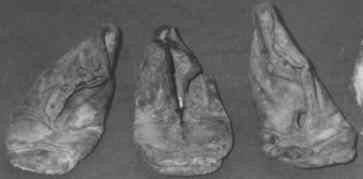
Steve Harber from Suffolk lives near the village church at Ilketshall St
Lawrence near Halesworth, and wanted to have explained a curious mark on
the tower roof. He wrote: 'The tower has a flat roof with lead covering.
Engraved in the lead are a number of old marks, some of them appear to
be drawn around the engraver's boot. A distinctive common mark within the
foot-shaped marks is a body tied in a sack on gallows. The tower is never
visited and the existence of the marks is not well known. I often wondered
why these are there and who would have put them there.'
The marks on the church tower are engraved into the lead roof. There
are several shoes. Most are dated - from the sixteenth century to the early
twentieth - and they have various engraved marks inside them including
a crown, a swastika and a hanged man. Local archaeologist Mike Hardy pointed
out that the shoes were different shapes - some with pointed toes, some
square and some round.
The shoe marks on the church roof are not hidden shoes. They are drawn
around the outside of a shoe - the shape of the shoe helps with dating
if no date is inscribed. The marks, too, are symbols. The crown meant authority,
and the swastika was a benign symbol until the twentieth century (it gets
its name from the Sanskrit word svastika, meaning well-being and
good fortune). The hanged man also represented a search for spiritual well-being.
There is little in the way of contemporary accounts about this apparently
very common practice, but it was a secretive custom associated with folk
magic.
Sue Constable of Northampton Museum explained that concealing shoes
is a well-known folk custom and is so common throughout the country that
the Museum has set up a Concealed Shoes Index to record all the occurrences.
The custom would appear to be a charm to ward off malevolent spirits who
might enter buildings, particularly homes, at inaccessible places - chimneys
are especially common hiding places. The Museum receives an average of
one find a month, but Sue Constable says that hundreds of finds every year
may well be simply thrown out by builders. In Britain as many as 50 date
from before 1600 and the numbers rise to more than 500 in the nineteenth
century, and then the finds tail off. Shoes are often found hidden in chimneys,
either on a ledge or in specially built cavities behind the hearth into
which items could be placed from above. Sometimes they were hidden under
bedroom floors.
The earliest reference to the use of shoes as some kind of spirit trap
comes from the 14th century. It
regards one of England’s unofficial saints, John Schorn from Buckinghamshire,
who was rector of
North Marston 1290-1314. His claim to fame is that he is reputed
to have performed the remarkable
feat of casting the devil into a boot. The oldest concealed shoes
date back to roughly the same time
as Schorn but there are very few examples from that period - he may have
begun the tradition, or it
may simply be that his legend records a pre-existing practice.
Over 1200 examples recorded so far. Many people who have discovered
shoes in buildings feel very strongly about not removing or even discussing
them. It is important, therefore, to treat individual feelings about
these items sensitively.
26.2% of shoes are found in chimneys, usually on a ledge within the chimney.
Shoes can be discovered in large groups and sometimes with
other artifacts. 11.3% are pairs of shoes - most are odd. 40%
of shoes belonged to children.
The shoe was not a cheap item, it may have been one of the most expensive
purchases a family had
to make. Therefore shoes were repaired as much as possible before
being discarded. Clearly, by the
time the shoe was discarded it provided a unique record of the wearers
individual foot. Here we may
have a similar principal to the witch-bottle, fooling the witch/spirit
that the person is there in the
chimney. It was probably hoped the shoe would trap the spirit or
act as a decoy of some sort. The
location of shoes, often either within or near to the hearth, does suggest
some kind of protective
function.
There are some specific points to record in the case of shoes in addition
to the general advice given
on the 'how you can help page'. The location of the find in relation
to north in the building should be
recorded, along with how many lace holes they have, whether (in your opinion)
it was a man's,
woman's, boy's, girl's, child's shoe and the date of the find also.
As with all finds, it is important to
attempt to ascertain the date of the building.
Garments have also been found concealed in buildings and may have a similar
significance in that
they are 'valuable' rubbish. They too have highly important personal
significance and may be a
similar practice to that of concealed shoes. Some research and conservation
on these finds has been
undertaken at the Textile Conservation Centre in Winchester.
Shoes were thought to have a special quality. They were repaired and
repaired until they became very individual. They came to be thought of
as the item of clothing which most clearly contained the soul of the individual.
There are suggestions that they were a fertility symbol. In the nursery
rhyme, the old woman who lived in a shoe had so many children she didn't
know what to do.
June Swann was the pioneer of research into concealed shoes with an article
in 1969 for the Journal
of Northampton Museum and Art Gallery - this museum holds a very
large collection of concealed shoes.
Further reading
Emily Brooks, 'Watch Your Step' (The National Trust Magazine, no.91,
Autumn 2000)
Timothy Easton, 'Spiritual Middens' in Encyclopedia of Vernacular
Architecture of the World, vol1, (Cambridge University Press, 1997)
Ralph Merrifield, The Archaeology of Ritual and Magic (Batsford,
1988)
Iona Opie and Moira Tatem, editors, A Dictionary of Superstitions
(Oxford Paperbacks, 1992)
David Pickering, Cassell Dictionary of Folklore (Cassel Reference,
1999)
Jacqueline Simpson and Steve Roud, A Dictionary of English Folklore
(OUP, 2001)
June Swann, 'Shoes concealed in buildings' (Journal of the Costume
Society no.30, 1996, pp.56-99)
Cameron, Pitt, Swann and Volken, ‘Hidden Shoes and Concealed Beliefs’,
Archaeological Leather Group Newsletter, issue 7, Feb 1998.
| Petrus
Camper (1722-1789) on the Shoe
Petrus Camper, "On the Best Form of Shoe,"
translated from Dutch into English by James Dowie, The Foot and Its
Covering (London: Hardwicke, 1861): xxvii-44. |
| Jean-Jacques Rousseau's commentary about native's view
of European
shoes, A Discourse Upon The Origin and Foundation of the Inequality
Among Mankind 1761 anonymously-translated English publication preserved
all of Jean-Jacques Rousseau's original footnotes. |
Handout |

Plate I, Fig. 1. The foot is divided into three parts, of which
the principal, N, E, is called the Tarsus; E, D, the Metatarsus;
and D, A, the Toes. |

Plate I, Fig. 2. The change which takes place in the foot when
we walk is of great importance: the great toe, A, K, then rests
upon the ground; the metatarsus, or instep, rises from b to B;
and the line d, c, lengthens and extends to B, increasing
the interval c, B, which is in this figure 1/4 of an inch French
measure, and, in consequence, a whole inch in nature.
The soles of our shoes and boots, which are generally made of the strongest
leather, become, in consequence of this elongation of the foot, too short
in proportion. The shoe then pinches the heel, and produces still worse
effects upon all the toes, especially the great toe; for as the sole cannot
yield from c to B, A yields towards c, and the great
toe is bent as at f, forming the [blue] angle
e,
f, D, together with the rest of the toes. Thus are produced
corns upon the joints, and other painful deformities of the feet. |

Plate I, Fig. 3. The astragalus, R, M, I, which supports
at R the whole weight of the body, is thus sustained by two [red]
oblique lines, R, B, R, A.
The great toe becomes bent towards P, and the higher the heels,
the greater will be the distortion,—the centre of gravity, R, acting
more and more in the line R, a; and the higher the heel and the
smaller the sole, the greater becomes the risk of falls and sprains. |

Plate II, Fig. 6. As the leg rests on the foot, and the centre
of gravity acts in a line perpendicularly, a line designated by Borelli
linea
propensionis, and represented by R,
S, in Figs. 3 and 6, it follows that this line ought always
to be observed.
The best position for the buckle or fastening of a shoe is, therefore,
directly over the top of the instep, neither too high nor too low, exactly
over the spot where the triangular ligament connects the tendons of the
extensors of the toes with the bones of the tarsus and metatarsus, at O,
N,. |

Plate I, Fig. 4. It is more than probable that in those persons
whose feet have not been distorted by the use of high heels, the heel-bone
receives the anterior part of the astragalus (H) upon the eminence
M,
L, which is then divided into two small sinuses (E and
F,
Fig. 4), separated by a space, K. |
Plate II, Fig. 8. If we consider the
sole of the foot (Fig. 8), we shall see that the diagonal line of this
supposed lozenge does not pass through its centre, but that the exterior
portion, A, B, D, M, Fig. 8, considerably exceeds the interior,
A,
B, E, N.
The sole of the foot is generally of the form represented in Fig. 8;
the part comprising the toes, E, D, B, in F, E, occupying
about one-third of the whole length of the foot.
The toes are naturally all parallel to the diameter A, B, as
I have represented them in Fig. 8, which is the outline of a foot that
has not been distorted by ill-made shoes.
There is an old and most unreasonable custom of making the shoes for
both feet alike, from one and the same last, with the additional absurdity
of giving the sole a certain arbitrary form, as at A, O, D, S, B, R,
E, N, Fig. 8. |
Has anything really changed
since Camper's day....?!
 |
| The [red] sole, A, N, E, R, B, S, D, O,
Fig.8, copied from the latest Parisian pattern, was intended for
the [blue] sole of the foot, A, I, Z, K, M, A,
Fig. 8!! |
|

Plate I, Fig. 5. Very frequently, however, we find but one sinus,
as at E, F, Fig. 5.
It appears to me very probable, then, that these sinuses become united
from the pressure to which they are subjected by high heels, causing the
obliteration of the division K. |

Plate II, Fig. 7. |

Plate II, Fig. 9. The erect position being a necessary prelude
to walking progression, it may be well, in idscussing this subject, to
look to what the celebrated Borelli has left us in his excellent work on
the Animal Motions. Our principal business being to explain the manner
in which we raise our fett from the ground in walking, we may turn to Fig.
9, where A, C, B represents the length of the leg and foot, turning
upon the hipjoint at A. C indicates the knee. Let us imagine
that a man standing on his right foot begins to walk along the street,
G,
F, it is certain that if there should be a stone, E, B, at B,
he will strike his foot against it; but if the heel of the shoe should
be of the height E, B, the centre of movement at the hip being thus
raised to D, he will avoid it, because the foot will pass from H
to I. |
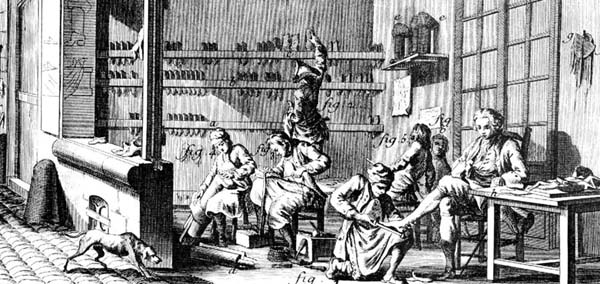 |
| www.shoeme.com/history.htm
www.shoesonthenet.com/terms.html
Beauty is
Shape by Pauline Weston Thomas for Fashion-Era.com
The
Cultural Body Alterations University of Iowa Medical Museum
www.bata.com/just_fun/foot_shoecare/anatomy.htm
www.savingfeet.com/Home/FootProblems/Foot_Anatomy.html
www.nefca.ca/find-ft-nurse/ftanatomy.asp |

Advertisement, 1961. (I. Miller Shoes)
Bernard Rudofsky, The Unfashionable Human Body (Garden City,
New York: Doubleday & Company, Inc., 1971): 116. |
 |
"The foot that fits the shoe: According to the gospel of our shoemakers,
the big toe ought to be in the place of the third one. Hence shoes for
symmetrical feet are not just a fashion but an unwritten law. To drive
home the immensity of this abomination, Bernard Pfriem, portraitist of
the human body par excellence, has obliged the author by interpreting the
shoe designers' unfulfilled dream." 3/28/71
Bernard Rudofsky, The Unfashionable Human Body (Garden City,
New York: Doubleday & Company, Inc., 1971): 113. |
[
G.
de Buffon (1707-1788) ] [ Petrus
Camper (1722-1789) ] [ L.-J.-M.
Daubenton (1716-1800) ] [ Enlightenment
Anthropology ] [ Orang-Utang
Graphics ] [ 18th-Century
Concepts ] [ 17th-Century
New France ] [ Translations
] [ N.
B. Jenison (1876-1960) ] [ Dr.
Meijer's Résumé ] [ Conference
Papers ] [ Publications
]
[ Dr.
Meijer's Book ] [ Rodopi
] [ Amazon.com
] [ PDF
Order Form ]
[ 1st
Review ] [ 2nd
Review ] [ 3rd
Review ] [ 4th
Review ]
[ Index
] [ Sitemap
]
Miriam Claude Meijer, Ph.D. |
Adult Mens and Womens Shoe Size Conversion Table
| Europe |
35 |
35½ |
36 |
37 |
37½ |
38 |
38½ |
39 |
40 |
41 |
42 |
43 |
44 |
45 |
46½ |
48½ |
Europe |
| Japan Men |
21.5 |
22 |
22.5 |
23 |
23.5 |
24 |
24.5 |
25 |
25.5 |
26 |
26.5 |
27.5 |
28.5 |
29.5 |
30.5 |
31.5 |
Japan Men |
| Japan Ladies |
21 |
21.5 |
22 |
22.5 |
23 |
23.5 |
24 |
24.5 |
25 |
25.5 |
26 |
27 |
28 |
29 |
30 |
31 |
Japan Ladies |
| Mexico |
|
|
|
|
|
4.5 |
5 |
5.5 |
6 |
6.5 |
7 |
7.5 |
9 |
10 |
11 |
12.5 |
Mexico |
| Australia & U.K. Men |
3 |
3½ |
4 |
4½ |
5 |
5½ |
6 |
6½ |
7 |
7½ |
8 |
8½ |
10 |
11 |
12 |
13½ |
Australia & U.K. Men |
| U.K. Women |
2½ |
3 |
3½ |
4 |
4½ |
5 |
5½ |
6 |
6½ |
7 |
7½ |
8½ |
9½ |
10½ |
11½ |
13 |
U.K. Women |
| Australia Women |
3½ |
4 |
4½ |
5 |
5½ |
6 |
6½ |
7 |
7½ |
8 |
8½ |
9½ |
10½ |
11½ |
12½ |
14 |
Australia Women |
| U.S. & Canada Men |
3½ |
4 |
4½ |
5 |
5½ |
6 |
6½ |
7 |
7½ |
8 |
8½ |
9 |
10½ |
11½ |
12½ |
14 |
U.S. & Canada Men |
| U.S. & Canada Women |
5 |
5½ |
6 |
6½ |
7 |
7½ |
8 |
8½ |
9 |
9½ |
10 |
10.5 |
12 |
13 |
14 |
15.5 |
U.S. & Canada Women |
| Russia & Ukraine Women |
33½ |
34 |
|
35 |
|
36 |
|
37 |
|
38 |
|
39 |
|
|
|
|
Russia & Ukraine Women |
| Inches |
9 |
91/8 |
9¼ |
93/8 |
9½ |
95/8 |
9¾ |
97/8 |
10 |
101/8 |
10¼ |
10½ |
10¾ |
11 |
11¼ |
11½ |
Inches |
| Centimeters |
22.8 |
23.1 |
23.5 |
23.8 |
24.1 |
24.5 |
24.8 |
25.1 |
25.4 |
25.7 |
26 |
26.7 |
27.3 |
27.9 |
28.6 |
29.2 |
Centimeters |
| Mondopoint |
228 |
231 |
235 |
238 |
241 |
245 |
248 |
251 |
254 |
257 |
260 |
267 |
273 |
279 |
286 |
292 |
Mondopoint |
Girl's Shoe Sizes
| Europe |
26 |
26.5 |
27 |
27.5 |
28 |
28.5 |
29 |
30 |
30.5 |
31 |
31.5 |
32.2 |
33 |
33.5 |
34 |
35 |
Europe |
| Japan |
14.5 |
15 |
15.5 |
16 |
16.5 |
17 |
17.5 |
18 |
18.5 |
19 |
19.5 |
20 |
20.5 |
21 |
21.5 |
22 |
Japan |
| U.K. |
8 |
8.5 |
9 |
9.5 |
10 |
10.5 |
11 |
11.5 |
12 |
12.5 |
13 |
13.5 |
1 |
1.5 |
2 |
2.5 |
U.K. |
| U.S. & Canada |
9.5 |
10 |
10.5 |
11 |
11.5 |
12 |
12.5 |
13 |
13.5 |
1 |
1.5 |
2 |
2.5 |
3 |
3.5 |
4 |
U.S. & Canada |
Top of page
"Size Matters Not!" Sure... If you are Yoda. Otherwise, you need to use
a conversion table.
Size matters not. Look at me, judge me by my size do you, hmm? And well
you should not, for my ally is the Force and a powerful ally it is.
Boys shoe sizes
| Europe |
29 |
29.7 |
30.5 |
31 |
31.5 |
33 |
33.5 |
34 |
34.7 |
35 |
35.5 |
36 |
37 |
37.5 |
Europe |
| Japan |
16.5 |
17 |
17.5 |
18 |
18.5 |
19 |
19.5 |
20 |
20.5 |
21 |
21.5 |
22 |
22.5 |
23 |
Japan |
| U.K. |
11 |
11.5 |
12 |
12.5 |
13 |
13.5 |
1 |
1.5 |
2 |
2.5 |
3 |
3.5 |
4 |
4.5 |
U.K. |
| U.S. & Canada |
11.5 |
12 |
12.5 |
13 |
13.5 |
1 |
1.5 |
2 |
2.5 |
3 |
3.5 |
4 |
4.5 |
5 |
U.S. & Canada |
Notes
-
The Mondopoint system is the same as measuring in Millimeters (or Millimetres,
mm.). Some companies treat Mondopoint as Centimeters (Centimetres, cm.).
-
American Women's shoe sizes are the same as American Men's shoe sizes plus
1½.
-
Canadian shoe sizes are equivalent (identical) to American shoe sizes for
both Adult and Children's, Men and Women.
-
Mexican shoe sizes plus 1½ are the same as American Men's shoe sizes.
-
British shoe sizes plus 1 are the same as American Men's shoe sizes. However,
I see many tables using a formula of British size plus 1½. Check
with the manufacturer.
-
I saw one table on the web indicating British womens running shoe sizes
were 1.5 plus mens size. I think this is incorrect and mistakenly applied
the United States sizing rule to the U.K.
-
Japanese shoes sizes are American Men's shoes sizes plus 18. (Some companies
say add 19.)
-
Europe uses a system that came from the French called Paris Points (aka Parisien
Prick). One Paris Point equals two-thirds of a centimeter. The system
starts at zero centimeters and increases. There are no half sizes. American
size 0 is the same as 15 Paris Points.
-
1 Centimeter (Centimetre) is 10 Millimeters (Millimetres).
-
1 Inch is 2.54 Centimeters (Centimetres).
-
Length in Inches = 71/3 + (US Men's shoe size)*1/3
-
Paris Points = 311/3 + (UK shoe size)*4/3.
-
A Chinese 7 is a UK 4. That's all I know at the moment about sizes of shoes
in China.
-
Australia and New Zealand use the same shoe sizes as the United Kingdom
for boys, men and girls. However, I have seen women's shoe charts where
Australia is 1 or 2 sizes bigger than U.K... I added an entry with one
size bigger.
-
Korea measures shoe sizes in millimeters (mm.).
-
There are two scales used in the U.S. The standard (or "FIA") scale and
the common scales. The "common" scale is more widely used. The scales are
about ½ size different.
-
Although different kinds of shoes prefer different measurement systems,
I believe the charts work for all kinds of shoes. (With the caveat of the
variations mentioned above.) I have been looking into army, military, ski,
hiking, climbing boots, ladies pumps, high-heeled, spike and dress shoes,
as well as sneakers, designer shoes, gentlemen's shoes, causal, penny loafers,
sandals, and other styles. I have not been researching children's shoes
in much detail. The sizes above are also good for soccer, golf, running
and other sports shoes. I have not tried bowling shoes or blue suede sneakers.
I intend to get more detail on Nike, Reebok, and Adidas due to the strong
interest in running shoes for people coming to this page.
-
If you have information or can point me at information about additional
measurement systems of systems used by different countries I would be grateful.
(I am interested in Latin America and Eastern Europe.)
-
Russian and Ukraine shoe sizes taken from Global7Network.com
See that site for exact sizes in centimeters.
Men
| English |
4½ |
5 |
5½ |
6 |
6½ |
7 |
7½ |
8 |
8½ |
9 |
9½ |
10 |
10½ |
11 |
11½ |
12 |
13 |
14 |
15 |
| US |
5½ |
6 |
6½ |
7 |
7½ |
8 |
8½ |
9 |
9½ |
10 |
10½ |
11 |
11½ |
12 |
12½ |
13 |
14 |
15 |
16 |
| French |
37½ |
38 |
38½ |
39 |
40 |
40½ |
41 |
42 |
42½ |
43 |
44 |
44½ |
45 |
46 |
46½ |
47 |
48½ |
49½ |
51 |
| Japanese |
23½ |
24 |
24½ |
25 |
25½ |
26 |
26½ |
27 |
27½ |
28 |
28½ |
29 |
29½ |
30 |
|
|
|
|
|
Women
| English |
|
|
|
3 |
3½ |
4 |
4½ |
5 |
5½ |
6 |
6½ |
7 |
7½ |
8 |
8½ |
| US |
4 |
4½ |
5 |
5½ |
6 |
6½ |
7 |
7½ |
8 |
8½ |
9 |
9½ |
10 |
10½ |
11 |
| French |
34 |
34½ |
35 |
35½ |
36 |
37 |
37½ |
38 |
38½ |
39 |
40 |
40½ |
41 |
42 |
42½ |
| Japanese |
|
|
|
22 |
22½ |
23 |
23½ |
24 |
24½ |
25 |
25½ |
26 |
26½ |
27 |
27½ |
Children
| English |
2 |
3 |
4 |
4½ |
5 |
6 |
7 |
8 |
8½ |
9 |
10 |
11 |
11½ |
12 |
13 |
13½ |
| US |
3 |
4 |
5 |
5½ |
6 |
7 |
8 |
9 |
9½ |
10 |
11 |
12 |
12½ |
13 |
1 |
1½ |
| French |
18 |
19 |
20 |
21 |
22 |
23 |
24 |
25 |
26 |
27 |
28 |
29 |
30 |
31 |
32 |
32½ |
| Japanese |
|
|
|
|
|
|
|
|
|
|
|
|
18 |
18½ |
19 |
19½ |
Teenagers
| English |
1 |
1½ |
2 |
2½ |
3 |
3½ |
4 |
4½ |
5 |
5½ |
6 |
6½ |
| US |
2 |
2½ |
3 |
3½ |
4 |
4½ |
5 |
5½ |
6 |
6½ |
7 |
7½ |
| French |
33 |
34 |
34½ |
35 |
35½ |
36 |
37 |
37½ |
38 |
38½ |
39 |
40 |
| Japanese |
20 |
20½ |
21 |
21½ |
22 |
22½ |
23 |
23½ |
24 |
24½ |
25 |
25½ |
Right-handed, Left-Footed
For most people, the larger foot is the opposite from the hand they write
with. Try on shoes starting with your larger foot.
Baum I & Spencer AM (1980) Limb Dominance: Its relationship to
Foot Length. J Am Pod. Assoc. 70(10): 505-507.
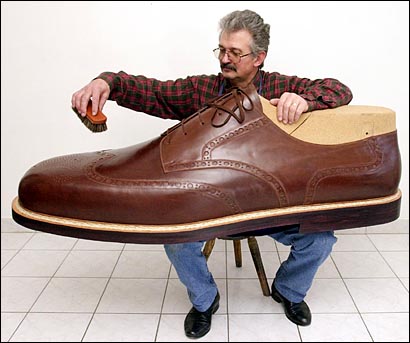 European size 217 men's shoe by Jozsef
Kovacs
European size 217 men's shoe by Jozsef
Kovacs
Shoe Width & Girth
Different shoe styles have different girths for the same shoe size, and
so do different shoe materials. Some manufacturers measure in width, some
in girth. Sometimes the difference is 1/4 inch, sometimes 3/16ths
of an inch and sometimes something else. The scale does not count upward
in a logical, incremental way, but uses letters:
AAAA (The narrowest)
AAA
AA
A
B
C
D
E
EE
EEE
EEEE (The widest)
No one knowswhy there isn't a BB or a CCC :-)
Foot measurements
from The National Institute of Advanced Industrial Science and Technology
Digital
Human Research Center, Japan
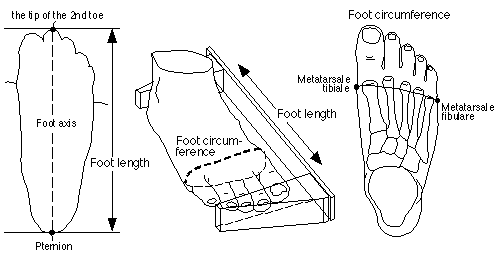
|
Abbreviation |
Measurement item |
| 1 |
M1 |
Bimalleolar breadth |
| 2 |
M2 |
Medial malleolus height |
| 3 |
M3 |
Sphyrion height |
| 4 |
M4 |
Lateral malleolus height |
| 5 |
M5 |
Sphyrion fibulare height |
| 6 |
M6 |
Dorsal arch height |
| 7 |
M7 |
Ball height |
| 8 |
M8 |
Outside ball height |
| 9 |
M9 |
Great toe tip height |
| 10 |
M10 |
Great toe height |
| 11 |
M11 |
Foot circumference |
| 12 |
M12 |
Instep circumference |
| 13 |
M13 |
Heel circumference |
| 14 |
M14 |
Diagonal ankle circumference |
| 15 |
M15 |
Foot length |
| 16 |
M16 |
Foot breadth |
| 17 |
M17 |
Foot breadth, diagonal |
| 18 |
M18 |
Foot length (JLIA) |
| 19 |
M19 |
Foot length (DIN) |
| 20 |
M20 |
Instep length |
| 21 |
M21 |
Fibular instep length |
| 22 |
M22 |
Back of foot length |
| 23 |
M23 |
Heel to medial malleolus |
| 24 |
M24 |
Heel to lateral malleolus |
| 25 |
M25 |
Foot breadth, diagonal (JLIA) |
| 26 |
M26 |
Ball breadth |
| 27 |
M27 |
Foot breadth (DIN) |
| 28 |
M28 |
Heel breadth |
| 29 |
M29 |
Ball flex angle |
| 30 |
M30 |
Toe I angle |
| 31 |
M31 |
Toe V angle |
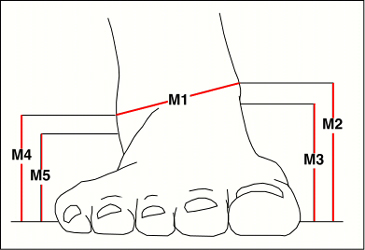

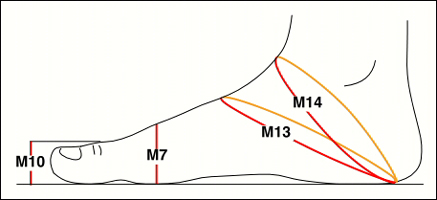
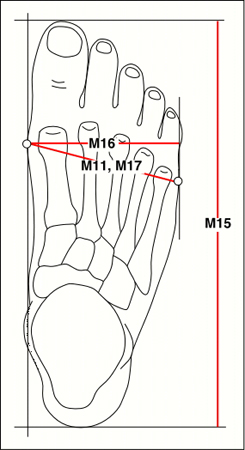
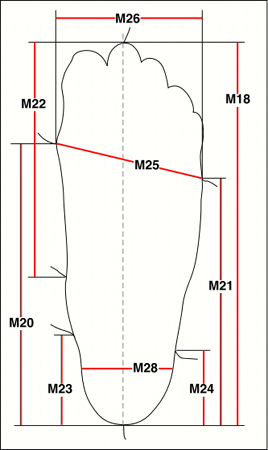
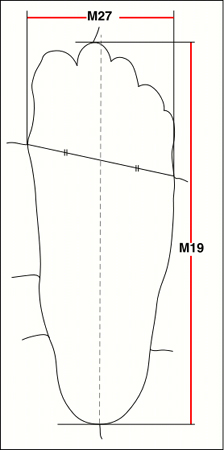
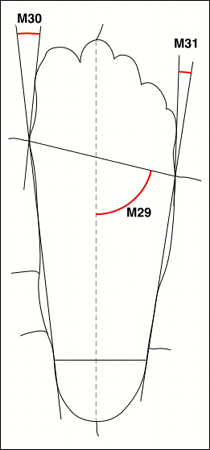
Is there an association between the use of heeled footwear and schizophrenia?
Jarl Flensmark, Medical Hypotheses
(2004) 63:740-747.
Existing etiological and pathogenetical theories
of schizophrenia have only been able to find support in
some epidemiological, clinical, and pathophysiological
facts. A selective literature review and synthesis
is used to present a hypothesis that finds support
in all facts and is contradicted by none.
Heeled footwear began to be used more than a 1000
years ago, and led to the occurrence of the first
cases of schizophrenia. Industrialization of shoe
production increased schizophrenia prevalence.
Mechanization of the production started in Massachusetts,
spread from there to England and
Germany, and then to the rest of Western Europe.
A remarkable increase in schizophrenia prevalence
followed the same pattern. In Baden in Germany the
increasing stream of young patients more or less
hastily progrediating to a severe state of cognitive
impairment made it possible for Kraepelin to
delineate dementia praecox as a nosological entity.
The patients continued to use heeled shoes after
they were admitted to the hospitals and the disease
progrediated.
High rates of schizophrenia are found among first-generation
immigrants from regions with a warmer
climate to regions with a colder climate, where
the use of shoes is more common. Still higher rates
among second-generation immigrants are caused by
the use of shoes during the onset of walking at an
age of about 11–12 months. Other findings point
to the importance of this in the later development of
schizophrenia. A child born in January–March begins
to walk in December–March, when it's cold
outside and the chances of going barefoot are smaller.
They are also smaller in urban settings.
During walking synchronised stimuli from mechanoreceptors
in the lower extremities increase activity
in cerebello-thalamo-cortico-cerebellar loops through
their action on NMDA-receptors. Using heeled
shoes leads to weaker stimulation of the loops.
Reduced cortical activity changes dopaminergic
function which involves the basal ganglia-thalamo-cortical-nigro-basal
ganglia loops. Bicycle riding
reduces depression in schizophrenia due to stronger
stimulation by improved lengthening contractions
of the triceps surae muscles. Electrode stimulation
of cerebellar loops normally stimulated by
mechanoreceptors in the lower extremities could
improve functioning in schizophrenia.
Cross-sectional prevalence studies of the association
between the use of heeled footwear and
schizophrenia should be made in immigrants from
regions with a warmer climate or in groups of
people who began to wear shoes at different ages.
Introduction
Schizophrenia is the most serious mental illness characterized
by disturbances of thought, behaviour
and mood appearing in young adults and by a deteriorating
course. Many etiological hypotheses have
been advanced, e.g., that schizophrenia is wholly
genetic, or that environmental factors such as
pregnancy or birth complications or early infections
are also important, but have not succeeded in
finding a correspondence between etiology, clinical
findings, course and outcome, brain pathology and
probable variations of prevalence. It is considered
to be either a developmental or a degenerative
disease, or a combination of both [1]. The diversity
of symptoms have been difficult to explain by a
unifying disease process [2].
History and epidemiology
The evolution of bipedal, plantigrade gait probably
occurred about ten million years ago. The first type
of shoe was a simple wraparound of leather, with
the basic construction of a moccasin. Although
sandals were the most common footwear in most early
civilizations, shoes were also worn. The oldest
depiction of a heeled shoe comes from Mesopotamia
[3], and in this part of the world we also find the
first institutions making provisions for mental
disorders. Possibly they and all the others that followed
were created because of the imperative need to care
for people affected by schizophrenia. Hospitals
with psychiatric divisions were created in Baghdad
(AD 750) and in Cairo (873). Special insane
asylums were built in Damascus (800), Aleppo (1270),
and in the Muslim-ruled Spanish city of
Grenada (1365) [4].
In Europe around 1400 we find Middle Eastern shoes
with a wedged sole, and cloglike overshoes
called pattens, which by then were wedge-shaped
at the back, raising the foot at the heel slightly
above the fore-part of the foot, and thus functioning
as heeled shoes. The creation of institutions for
the insane was also imported to Europe from the
Orient as hospitals with psychiatric divisions were
erected in Paris, Lyon, Munich, Basel, and Zurich
in the 13th century. Bethlehem hospital in London
began receiving the insane in 1377. The first Christian
European asylums were founded in Valencia
(1409), Saragosa (1425), Seville and Valladolid
(1436), and Toledo (1483) under the influence of Islam
[4]. During the 15th and 16th centuries the number
of asylums in Europe grew dramatically.
In the beginning schizophrenia appears to be more
common in the upper classes. Possible early victims
were King Richard II (1367–1400) and Henry VI (1421–1471)
of England, his grandfather Charles VI
(1368–1422) of France, his mother Jeanne de Bourbon,
and his uncle Louis II de Bourbon, Erik XIV
(1535–1577) of Sweden, Juana (1479–1555) of Castile,
her grandmother Isabella of Portugal and her
grandson Don Carlos (1545–1563), of Schiller and
Verdi fame [5]. Probably the upper classes began
using heeled footwear earlier than the lower classes.
Several studies from India since the 1930s
confirm that schizophrenia first affects the upper
classes [6]. The relation to a change in the use of
footwear is also apparent here, since modern European
and American footwear probably were being
more common in India during these years. As early
as 1740 the Danish–French anatomist Jakob
Winslow [7] warned against the wearing of heeled
shoes, expecting it to be the cause of certain
infirmities which appear not to have any relation
to it.
In England the heeled shoe became fashionable from
the beginning of the 17th century. The Civil
Wars (1642–1651) brought army orders for boots and
shoes, and the emergence of the modern
pattern of shoemaking [8]. An increase in the use
of heeled footwear followed and probably a gradual
increase in the prevalence of schizophrenia [9].
Torrey and Miller [10] suggest that insanity rates
increased at least sevenfold between the mid-18th
and the mid-20th centuries. From the beginning of
the 19th century a probable increase in the use
of heeled footwear by children learning to walk led to
the appearance of the classical juvenile type of
schizophrenia [11] (see Fig. 1).

Figure 1. Total admissions
(all diagnoses) per 1000 population to asylums in Masssachusetts
(averages of two yearly
admissions per decennium) [12], England and Wales (five-year averages)
[13], Baden (five-
and four-year averages) [14], and Sweden (five-year averages) [15,16 and
17],
during the 19th and
beginning of the 20th century.
In the United States insanity rates appear to have
increased even greater than in England between the
mid-18th and the mid-20th centuries. Shoe production
increased in Massachusetts after the Revolution
(1776–1783), and the prevalence of insanity/schizophrenia
increased from the 1830s. It was common
opinion during this time that mental diseases increased,
and that the increase was most pronounced in
the United States. During the 1830s and 1840s asylums
were built in almost every state. Torrey and
Bowler [18] report that in 1852 insanity was more
common in manufacturing and mercantile
communities in Massachusetts than in farming areas.
These communities probably took part in the
early industrial production or distribution of footwear
in this state, making it probable that they used
factory-made footwear earlier than other communities.
The Civil War (1861–1865) gave a major
impetus to mechanised shoe production, and the establishment
of a shoe machine industry in
Massachusetts led to shoes being made quickly and
inexpensively, the use of factory-made, heeled
footwear spread to the masses in the United States,
and then to England, Germany, the rest of
Western Europe, and all over the world, and the
prevalence of schizophrenia increased everywhere.
White [19] reviewed the data of the 1880 Census
and noticed that the prevalence of insanity was
higher in the northeastern states, and that it declined
with the distance from them. A graph of
admissions to asylums in Massachusetts shows a steep
rise between 1828 and 1843. The increase of
admissions to asylums in Connecticut comes some
20 years later, in New York State some 30 years
later, and in Pennsylvania there is but a slow rise
up to 1875.
In Germany mechanised shoe production was established
later than in the United States and England.
Total admissions to asylums in Baden rose steeply
between 1887 and 1907. Kraepelin was director of
the Psychiatric Clinic at the University of Heidelberg
1891–1903, and in the middle of the steeply
rising phase of the schizophrenia epidemic in this
state he wrote the 4–7th editions of his textbook. An
increasing stream of young patients more or less
hastily progrediating to a state of severe cognitive
impairment made it possible for Kraepelin [20] to
delineate dementia praecox as a nosological entity.
In Sweden industrial shoe production started in the
1870s, but did not make a breakthrough until tariff
protection increased in 1897. Around 1908–1910 factory
made shoes were available for the rural
population. In 1913 the shoe industry had enough
capacity for the needs of the Swedish market.
During World War I there was a shortage, thereafter
the prevalence of schizophrenia rose.
Hare [21] discusses the increase of admissions to
asylums in England between 1859 and 1909 and
concludes that schizophrenia could account for at
least 40% of the increase. Eaton et al. [22] state
that the majority of patients with psychosis in
Massachusetts from 1840 to 1940 had schizophrenia.
The situation in Sweden in the beginning of the
20th century probably was similar, manic-depressive
disorder did not show much change over time, and
the number of beds was always insufficient to
allow admission of minor afflictions. Shorter [11]
suggests that neurosyphilis and alcoholism together
represented overall only a fraction of all admissions
in the Western World, and that there is enough
evidence to justify the conjecture that the incidence
of schizophrenia rose significantly during the 19th
century. It is probably justifiable to assume that
the figure illustrates the approximate rise in incidence
of schizophrenia in the four populations.
After heeled shoes is introduced into a population
the first cases of schizophrenia appear and then the
increase in prevalence of schizophrenia follows
the increase in use of heeled shoes with some delay.
After the prevalence of schizophrenia has reached
a maximum there probably is some decrease,
although there is no decrease in the use of heeled
shoes. Evidence from nearly a century of
epidemiological research indicates that schizophrenia
occurs in all populations with a prevalence rate in
the range of 1.4–4.6 per 1000 population [23]. Different
methods of case finding and ascertainment
will result in different prevalence rates and so
will demographic differences. Many studies of
geographical variations have been criticized for
imperfect methodologies but can probably not be
ignored, especially not the modern migration studies.
They do, however, not point in any single
etiological direction.
In the mid-latitude climates people traditionally
wore flat shoes or boots, in some regions and during
summer some people, particularly children, went
barefoot, in Sweden for example well into the 20th
century. Böök [24], in a study of an isolated
population of predominantly Finnish ethnicity in the Torne
Valley in Sweden in 1949, found a schizophrenia
prevalence rate of 9.5 per 1000, and Böök et al. [25],
in a re-study in 1977, 17 per 1000, one of the highest
rates found in any major study in the world to
date. In Ireland insanity rates appears to have
increased more than in England between the mid-18th
and the mid-20th centuries [10]. High rates of schizophrenia
have consistently been reported and
might partly be explained by selective out-migration
over several generations [26]. Most of the Irish
have, however, gone barefoot well into the 19th
century. Rainfall is important for the use of footwear,
the western parts of Ireland have more rainfall
and also have a higher rate of schizophrenia than the
north-eastern parts. Torrey et al. [27] found a
prevalence rate in a rural area in Western Ireland more
than seven times the rate found in Dublin [28],
where there also is less rainfall. Data collected
1962–1966 show that the prevalence of schizophrenia
in Istria was twice that in the rest of Croatia,
which probably indicates that the change to heeled
shoes occured earlier in Istria, which belonged to
Italy 1919–1947, had a large proportion of Italian
inhabitants and probably was more influenced by
West European fashions [29]. Opankes, a one-piece
moccasin-style construction, were widely born in
rural Balkan regions, where they were often made
by the wearers themselves, and mass produced by
the 19th century. The consistently high rates also
found in Istria might also be partly explained by
selective out-migration over several generations
[26]. Among Native Americans, who used moccasins,
a relative infrequency of schizophrenia has been
noted [6]. The Hutterites and the Amish are
members of conservative Christian groups of Austrian,
Swiss, and German origin now living in the
United States and Canada where they operate farms,
remain aloof from outside society and retain
their uniform 16th and 17th century European folk
costumes, which included flat shoes. In the 1930s
insanity was said to be almost non-existent in the
Hutterite population. By 1944 members were to
some extent authorized to wear modern "high" shoes.
In 1950–1953, Eaton and Weil [30] and Torrey
[31] found a schizophrenia prevalence rate of 1.3
per 1000. A re-study in 1992–1993 by Nimgaonkar
et al. [32] found 1.2 per 1000. There were only
four cases of schizophrenia among ?12.500 Amish
studied 1976–1980 by Egeland and Hostetter [33],
that is circa 0.3 per 1000. The Amish and the
Hutterites prevalence rates are less than 25% of
the rates reported for rural areas in the United States
in recent studies [28].
In the coldest climates people traditionally wore
flat boots. The Saami live in Norway, Sweden,
Finland, and the Kola Peninsula in Russia. The Swedish
Census of 1930 [34] reports a prevalence of
insanity in the Saami that was twice that in the
general population. Andersen [35] found more acute
psychoses in a Saami than in a non-Saami population.
In 1944 Bremer [36] found a schizophrenia
prevalence rate of 5.3 per 1000 in Berlevåg,
an isolated fishing village in Northern Norway on Barents
Sea predominantly inhabited by people of Norwegian
ethnicity. A relative isolation from the main parts
of Norway made them use Saami boots right up to
the 1930s. Lynge et al. [37] found a higher
prevalence of schizophrenia in the Greenlandic population
compared to the population in Denmark.
The traditional Greenlandic footwear is a sealskin
boot, and as long as these were worn there probably
was no schizophrenia in the population, older literature
describes it as at least very uncommon.
In the warmest climates people traditionally went
barefoot or used sandals. The almost complete
absence of schizophrenia is noted in several reports
from Africa before World War II [6], Torrey [28],
in a review of prevalence studies, reproduces data
from Ghana in 1984, 0.5 per 1000, and Botswana in
1986, 2.0 per 1000. In the Pacific Islands many
observations indicated the absence of schizophrenia.
There was a 20-fold difference in rates between
some highland districts and some coastal districts,
this could be explained by more contacts with the
Western World and its fashions [38]. Surveys in
Taiwan in three Chinese communities 1946–1948 [39]
and in four Aboriginal tribes 1949–1953 [40]
reported a schizophrenia prevalence rate of 2.1
per 1000 in the Chinese and between 0 and 1.1 in the
Aborigines. Probably the use of modern shoes was
more common in the Chinese, who mostly lived in
the towns and were more influenced by Western fashions.
Other studies show the effects of people migrating
from a region with less common use of heeled
footwear to a region with more common use. The high
prevalence of insanity in European immigrants
in the United States was noted already in the middle
of the 19th century. Odegaard [41] found higher
total admission rates of Norwegian immigrants than
of native Americans in an asylum in Minnesota
between 1889 and 1929. The admission rate for schizophrenia
was also higher in Norwegians in the
Minnesota asylum than in an asylum in Norway. White
noticed that the prevalence of insanity in
African–Americans increased when they migrated from
the South to the North, and Ödegard [42]
mentions the immigration from Puerto Rico to New
York City after World War II, where the
frequency of schizoprenia in immigrants was nearly
double that in native New Yorkers. Schizophrenia
has been common among Irish immigrants to the United
States [6], probably because they began to
use heeled footwear. High rates of schizophrenia
in African–Caribbean immigrants in Britain since the
1960s [43] higher admission rates in the second-generation
than in the first-generation immigrants [44],
and a morbid risk in second-generation siblings
of patients with schizophrenia that is 3.0–6.2 times
higher than in the first-generation ones [45 and
46], strengthens the possibility that the high rates are
attributable to an environmental factor, probably
that children in Britain learn to walk wearing shoes
while children in the Caribbean go barefoot. High
rates of schizophrenia has also been found in The
Netherlands in immigrants of British-Indian and
African origin from Surinam and the Netherlands
Antilles, in immigrants from Morocco and Cape Verde
but not from Turkey [47]. Turkish men have
worn heeled footwear since the 15–16th centuries,
West European styles since mid-19th century,
women from the 1870s. High rates have also been
found among immigrants to Sweden, especially
from East-Africa [48].
Torrey [6] discusses the role of civilization/industrialization
in the etiology of schizophrenia. The
industrial revolution, which started in England
in the middle of the 18th century, resulted in the 19th
century in a GNP per capita which was nearly double
that of the rest of Western Europe and the
United States, not until the 1890s was England surpassed
by the United States, whose economy grew
dramatically after the Civil War. No other factor
associated with this general economic development
can explain the rapid increase in the prevalence
of insanity/schizophrenia in Massachusetts during the
1830s and 1840s but the increased shoe production.
There probably is a linkage between an increase in
space and time in the use of heeled footwear, and
an increase in the prevalence of schizophrenia.
A slowly rising epidemic in England, probably from the
end of the 18th century, was followed by a more
rapidly rising epidemic in the United States from the
1830s, and then in Germany and Sweden. Such epidemics
of schizophrenia could probably only have
been caused by one and the same etiologic factor
acting in populations with individuals genetically less
adapted to the change. Changing symptoms and incidence,
increasing age of onset, a change in course
and outcome strengthen the idea of epidemics of
schizophrenia. World, ethnic, and national dress are
inter-related in today's global community, and modern
studies of schizophrenia occurence in different
groups and different countries often find no great
differences [49]. Differences found could be
attributed to different time courses of prevalences
in different groups.
Physiology
Lengthening contractions of the triceps surae muscles
during walking results in synchronised barrages
of impulses from the mechanoreceptors reaching the
cerebello-thalamo-cortico-cerebellar loops where
they increase cortical excitability [50]. The left
and the right parts of the cerebellum are stimulated
alternately. Stimulation of NMDA-type glutamate
receptors leads to expression of synaptic proteins
and modifications in synaptic and dendritic organization
[51]. Using heeled shoes weakens the
lengthening contractions and the stimulation of
the receptors, and a decrease in cortical activity leads
to a change in dopaminergic function thereby involving
the basal ganglia-thalamo-cortico-basal ganglia
loops, too [52, 53, 54, 55, 56, 57 and 58]. Heath
[59] found that electrode stimulation of the anterior
parts of the cerebellum could improve functioning
in schizophrenia. These parts are normally
stimulated by impulses from stretch receptors in
the lower extremities. Bicycling reduces depression in
schizophrenia and this is probably due to the improved
lengthening contractions of the triceps surae.
Involvement of different loops in different brain
regions leads to different symptoms and signs [60, 61,
62, 63 and 64]. The neuropathology of schizophrenia
represents the anatomical substrate of abberant
functional connectivity [65]. Susceptibility genes
for schizophrenia may have convergent effects on
glutamatergic and other synapses [66].
According to Ledebt et al. [67] gait initiation starts
when the child stands up and then begins to fall
forward. The first few months after onset of walking
are followed by a period of development of
anticipatory behaviour participating in a finer
tuning of postural and locomotor components of gait.
White children reach independent walking at a mean
age of 11.6 months and black children at 10.9
months [68]. Jamaican infants walk earlier than
infants from five European countries [69], the warm
climate probably giving them a better chance to
walk barefoot. A study from Philadelphia in 1979 [70]
found that infants receive their first walking shoes
at an average age of 8.1 months. Such shoes look
quite flat but are provided with insoles that are
somewhat thicker in the heel part, so as to function as
heeled shoes.
The earlier in life children wear shoes the more
vulnerable they may be as cellular proliferation and
migration in the cerebellum does not cease until
after the child begins to walk [71]. Degree of
urbanization of birthplace or upbringing might be
associated with the rate of schizophrenia and
probably is a proxy variable for the use of shoes
when the child begins to walk, urban children more
often wearing shoes than rural children [72]. The
seasonal variation of schizophrenia births [73] also
could be explained by the use of shoes. A child
born in January–March begins to walk about 11–12
months later, in December–March when its winter
and cold and the child probably has the least
chance to go barefoot. Birth deficits in the summer
and fall months could likewise be explained by the
better chance of going barefoot. Data from the British
1946 Birth Cohort [74] show that milestones of
motor development, particularly walking, were delayed
in children who went on to develop
schizophrenia as adults. Another study found that
the ages at learning to walk was related to
subsequent incidence of schizophrenia and other
psychoses [75]. Gait peculiarities in schizophrenia
were noted already by Eugen Bleuler.
Schizophrenia is supposed to have its origins in
developmental processes that transpire prior to the
onset of clinical symptoms [1], but it is difficult
to explain how an early static lesion could lead to
clinically apparent schizophrenia twenty years later.
A continuous faulty stimulation of the cerebellar
loops during many years, often starting when the
child begins to walk, may, after at least ten years,
result in clinically apparent schizophrenia. Norwegian
immigrants [41] spent at least 10 years in the
United States before they were admitted to an asylum,
that is, they had to use heeled footwear for at
least so many years. Immigrants with schizophrenia
or other non-affective psychoses spent a mean of
nine years in Sweden before first contact with psychiatry
[48]. That continuous faulty stimulation leads
to schizophrenia implies progressive brain pathology,
and Kraepelin originally described dementia
praecox as a progrediating disease, and considered
it to be a self-inflicted poisoning. The patients
continued to wear heeled shoes in the asylums, and
the continued faulty stimulation led to progressive
degeneration.
The onset of schizophrenia during the adolescence
may be related to the maturation of the dopamine
controlled basal ganglia loops during these years
[76], which is modulated by gonadal hormones [77].
Reduced glutamatergic stimulation of the cerebellar
loops may not have an apparent effect until
puberty and early adulthood, when these loops mature
[57 and 76].
Conclusions
Many data suggest an association between the use of
heeled footwear and schizophrenia and they
could probably be questioned in many instances.
I have however not been able to find any
contradictory data. One possibility would be the
existence of young patients not being able to use their
legs during many years and yet having schizophrenia.
I have never seen such a patient.
I suggest that there is an association between the
use of heeled footwear and schizophrenia.
Cross-sectional prevalence studies should be performed,
e.g., in immigrants from regions with less use
of footwear, or for example in India where different
groups of people begin to wear shoes at different
ages.
The effects of the use of heeled and flat shoes during
shorter or longer periods of time on cortical
excitability [54], and on connectivity in cerebellar
and basal ganglia loops [52 and 55] could be studied
in patients with schizophrenia. A normalization
of patterns would indicate the importance of the
proposed neural pathways in the pathophysiology
of schizophrenia.
Patients could be recruited to clinical trials of
the effects of using only flat shoes as long as possible on
symptoms and cognitive deficits.
Acknowledgements
June Swann, MBE, Northampton, England and Professor
Håvard Dahl Bratrein, Tromso, Norway for
contributions to the history of footwear.
References
1. D.R. Weinberger and R. McLure, Neurotoxicity, neuroplasticity,
and magnetic resonance imaging
morphometry – what is happening in the schizophrenic
brain?. Arch. Gen. Psychiat. 59 (2002), pp.
553–558. Abstract-EMBASE | Abstract-MEDLINE
| $Order Document | Full Text via CrossRef
2. N.C. Andreasen, P. Nopoulos, D.S. O'Leary, D.D.
Miller, T. Wassink and M. Flaum, Defining the
phenotype of schizophrenia: cognitive dysmetria
and its neural mechanisms. Biol. Psychiat. 46 (1999),
pp. 908–920. Abstract | Full Text + Links | PDF
(2153 K)
3. S.F. Stewart, Footgear – its history; uses and
abuses. Clin. Orthopaed. Rel. Res. 88 (1972), pp.
119–130. Abstract-MEDLINE | $Order Document
4. R. Colp, Jr., History of psychiatry. In: B.J.
Sadock and V.A. Sadock, Editors, Kaplan and
Sadock's comprehensive textbook of psychiatry (7th
ed.), Lippincott Williams & Wilkins,
Philadelphia (2000).
5. V. Green, The madness of kings. , St Martin Press,
New York (1993).
6. E.F. Torrey, Schizophrenia and civilization. ,
Jason Aronson, New York (1980).
7. M. Linder and C.L. Saltzman, A history of medical
scientists on high heels. Int. J. Health Serv. 28
(1998), pp. 201–225. Abstract-MEDLINE
| $Order Document
8. Swann J. Shoemaking. Princes Risborough, Buckinghamshire:
Shire Publications; 1986
9. E. Hare, Was insanity on the increase?. Br. J.
Psychiat. 142 (1983), pp. 439–455.
Abstract-MEDLINE | Abstract-EMBASE | Abstract-PsycINFO
| $Order Document
10. E.F. Torrey and J. Miller, The invisible plague
– the rise of mental illness from 1750 to the present.
, Rutgers University Press, New Brunswick, NJ (2002).
11. E. Shorter, A history of psychiatry. , Wiley,
New York (1997) p. 50–62 .
12. G.N. Grob, Mental institutions in America – social
policy to 1875. , Free Press, New York (1973)
p. 379–80 .
13. Commissioners in Lunacy. Annual Reports 1854–1913.
London, HMSO; 1855–1914
14. K. Wilmanns, Die Zunahme der anstaltsbedurftigen
Geisteskranken in Baden und ihre Ursachen.
Zfdg Neurologie u Psychiatrie 4 (1911), pp. 617–628.
15. Sveriges officiella statistik. Bidrag till. K,
Helso- och sjukvården. 2; 1853–1900. Stockholm;
1854–1902
16. Sveriges officiella statistik. K, Helso- och
sjukvården. 2; 1901–1910. Stockholm; 1903–1912
17. Sveriges officiella statistik. Hälso- och
sjukvård, Sinnessjukvård; 1911–1939. Stockholm;
1913–1941
18. E.F. Torrey and A. Bowler, Geographical distribution
of insanity in America: evidence for an
urban factor. Schizophr. Bull. 16 (1990), pp. 591–604.
Abstract-EMBASE | Abstract-PsycINFO |
Abstract-MEDLINE | $Order Document
19. W.A. White, The geographical distribution of
insanity in the United States. J. Nerv. Ment. Dis. 30
(1903), pp. 257–279.
20. E. Kraepelin, Memoirs. , Springer, Berlin (1987)
p. 43–4, 59–61, 65 .
21. E. Hare, Schizophrenia as a recent disease. Br.
J. Psychiat. 153 (1988), pp. 521–531.
Abstract-PsycINFO | Abstract-MEDLINE | Abstract-EMBASE
| $Order Document
22. W.W. Eaton, R. Day and M. Kramer, The use of
epidemiology for risk factor research in
schizophrenia: an overview and methodological critique.
In: M.T. Tsuang and J.C. Simpson, Editors,
Handbook of schizophrenia vol. 13, Elsevier, Amsterdam
(1988).
23. A. Jablensky, Epidemiology of schizophrenia:
the global burden of disease and disability. Eur.
Arch. Psychiat. Clin. Neurosci. 250 (2000), pp.
274–285. Abstract-PsycINFO | Abstract-EMBASE
| Abstract-MEDLINE | $Order Document
| Full Text via CrossRef
24. J.A. Böök, A genetic and neuropsychiatric
investigation of a North-Swedish population. Acta
Genet. 4 (1953), pp. 1–100.
25. J.A. Böök, L. Wetterberg and K. Modrzewska,
Schizophrenia in a North Swedish geographical
isolate, 1900–1977. Epidemiology, genetics and biochemistry.
Clin. Genet. 14 (1978), pp. 373–394.
Abstract-MEDLINE | Abstract-EMBASE |
$Order Document
26. A. Jablensky, Epidemiology of schizophrenia:
a European perspective. In: A. Seva, Editor, The
European handbook of psychiatry and mental health,
Anthropos, Barcelona (1991).
27. E.F. Torrey, M. McGuire, A. O'Hare, D. Walsh
and M.P. Spellman, Endemic psychosis in
Western Ireland. Am. J. Psychiat. 141 (1984), pp.
966–969.
28. E.F. Torrey, Prevalence studies in schizophrenia.
Br. J. Psychiat. 150 (1987), pp. 598–608.
Abstract-PsycINFO | Abstract-MEDLINE
| $Order Document
29. G.M. Crocetti, P.V. Lemkau, Z. Kulcar and B.
Kesic, Selected aspects of the epidemiology of
psychoses in Croatia, Yugoslavia. III. The cluster
sample and the results of the pilot survey. Am. J.
Epidemiol. 94 (1971), pp. 126–134. Abstract-MEDLINE
| $Order Document
30. J.W. Eaton and R.J. Weil, Culture and mental
disorders: a comparative study of the hutterites and
other populations. , Free Press, Glencoe, IL (1955).
31. E.F. Torrey, Prevalence of psychosis among the
Hutterites: a reanalysis of the 1950–53 study.
Schizophr. Res. 16 (1995), pp. 167–170. Abstract
| Full Text + Links | PDF (269 K)
32. V.L. Nimgaonkar, T.M. Fujiwara, M. Dutta et al.,
Low prevalence of psychosis among the
Hutterites, an isolated religious community. Am.
J. Psychiat. 157 (2000), pp. 1065–1070.
Abstract-MEDLINE | Abstract-EMBASE | Abstract-PsycINFO
| $Order Document | Full Text via
CrossRef
33. J.A. Egeland and A.M. Hostetter, Amish study,
I: Affective disorders among the Amish,
1976–1980. Am. J. Psychiat. 140 (1983), pp. 56–61.
Abstract-MEDLINE | Abstract-EMBASE |
Abstract-PsycINFO | $Order Document
34. Sveriges officiella statistik. Folkräkningen
den, 31 December; 1930. Del IV. Stockholm; 1936. p.
19–20
35. T. Andersen, Physical and mental illness in a
Lapp and a Norwegian population. Acta Psychiatr.
Scand. Suppl. 263 (1975), pp. 47–56. Abstract-EMBASE
| Abstract-PsycINFO |
Abstract-MEDLINE | $Order Document
36. J. Bremer, A social psychiatric investigation
of a small community in Northern Norway. Acta
Psychiat. Neurol. Suppl. 62 (1951).
37. I. Lynge, P.B. Mortensen and P. Munk-Jorgensen,
Mental disorders in the Greenlandic population.
A register study. Int. J. Circumpolar Health 58
(1999), pp. 188–197. Abstract-MEDLINE | $Order
Document
38. E.F. Torrey, B.B. Torrey and B.G. Burton-Bradley,
The epidemiology of schizophrenia in Papua
New Guinea. Am. J. Psychiat. 131 (1974), pp. 567–573.
Abstract-EMBASE | Abstract-PsycINFO |
Abstract-MEDLINE | $Order Document
39. T. Lin, A study of the incidence of mental disorder
in Chinese and other cultures. Psychiatry 16
(1953), pp. 313–336.
40. H. Rin and T. Lin, Mental illness among Formosan
Aborigines as compared with the Chinese in
Taiwan. J. Ment. Sci. 108 (1962), pp. 134–146.
41. O. Odegaard, Emigration and insanity. Acta. Psychiat.
Neurol. Suppl. 4 (1932).
42. Ö. Ödegard, Die Epidemiologie der Psychosen.
Nervenarzt 42 (1971), pp. 569–575.
Abstract-MEDLINE | $Order Document
43. M. Sharpley, G. Hutchinson, K. McKenzie and R.M.
Murray, Understanding the excess of
psychosis among the African–Caribbean population
in England. Br. J. Psychiat. 178 Suppl. 40 (2001),
pp. 60–68.
44. D. McGovern and R.V. Cope, First psychiatric
admission rates of first and second generation
Afro Caribbeans. Soc. Psychiat. 22 (1987), pp. 139–149.
Abstract-MEDLINE | Abstract-PsycINFO
| Abstract-EMBASE | $Order Document
45. P.A. Sugarman and D. Craufurd, Schizophrenia
in the Afro-Caribbean community. Br. J.
Psychiat. 164 (1994), pp. 474–480. Abstract-MEDLINE
| Abstract-EMBASE | Abstract-PsycINFO
| $Order Document
46. G. Hutchinson, N. Takei, T.A. Fahy et al., Morbid
risk of schizoprhenia in first-degree relatives of
white and African–Caribbean patients with psychosis.
Br. J. Psychiat. 169 (1996), pp. 776–780.
Abstract-EMBASE | Abstract-PsycINFO | Abstract-Elsevier
BIOBASE | Abstract-MEDLINE |
$Order Document
47. J.P. Selten, N. Veen, W. Feller et al., Incidence
of psychotic disorders in immigrant groups to The
Netherlands. Br. J. Psychiat. 178 (2001), pp. 367–372.
Abstract-EMBASE | Abstract-Elsevier
BIOBASE | Abstract-MEDLINE | Abstract-PsycINFO
| $Order Document | Full Text via
CrossRef
48. K. Zolkowska, E. Cantor-Graae and T. McNeil,
Increased rates of psychosis among immigrants to
Sweden: is migration a risk factor for psychosis?.
Psychol. Med. 31 (2001), pp. 669–678.
Abstract-EMBASE | Abstract-MEDLINE | Abstract-PsycINFO
| $Order Document | Full Text via
CrossRef
49. A. Jablensky, N. Sartorius, G. Ernberg et al.,
Schizophrenia: manifestations, incidence and course
in different cultures. A World Health Organization
ten-country study. Psychol. Med. Monograph
Suppl. 20 (1992).
50. B.L. Day, H. Riescher, A. Struppler, J.C. Rothwell
and C.D. Marsden, Changes in the response
to magnetic and electrical stimulation of the motor
cortex following muscle stretch in man. J. Physiol.
(London) 433 (1991), pp. 41–57. Abstract-MEDLINE
| Abstract-EMBASE | $Order Document
51. M. Molinari, V. Filippini and M.G. Leggio, Neuronal
plasticity of interrelated cerebellar and
cortical networks. Neuroscience 111 (2002), pp.
863–870. Abstract | Full Text + Links | PDF (292
K)
52. K.E. Stephan, V.A. Magnotta, T. White et al.,
Effects of olanzapin on cerebellar functional
connectivity in schizophrenia measured by fMRI during
a simple motor task. Psychol. Med. 31
(2001), pp. 1065–1078. Abstract-EMBASE | Abstract-MEDLINE
| Abstract-PsycINFO | $Order
Document | Full Text via CrossRef
53. E.B. Mukaetova-Ladinska, J. Hurt, W.G. Honer,
C.R. Harrington and C.M. Wischik, Loss of
synaptic but not cytoskeletal proteins in the cerebellum
of chronic schizophrenics. Neurosci. Lett. 317
(2002), pp. 161–165. Abstract | Full Text + Links
| PDF (182 K)
54. P. Eichhammer, R. Wiegand, A. Kharraz, B. Langguth,
H. Binder and G. Hajak, Cortical
excitability in neuroleptic-naive first episode
schizophrenic patients. Schizophr. Res. 67 (2004), pp.
253–259. Abstract | Full Text + Links | PDF (142
K)
55. V. Menon, R.T. Anagnoson, G.H. Glover and A.
Pfefferbaum, Functional magnetic resonance
imaging evidence for disrupted basal ganglia function
in schizophrenia. Am. J. Psychiat. 158 (2001),
pp. 646–649. Abstract-EMBASE | Abstract-MEDLINE
| Abstract-PsycINFO | $Order Document |
Full Text via CrossRef
56. F.A. Middleton and P.L. Strick, Basal ganglia
and cerebellar loops: motor and cognitive circuits.
Brain Res. Rev. 31 (2000), pp. 236–250. Abstract
| Full Text + Links | PDF (370 K)
57. S. Tekin and J.L. Cummings, Frontal-subcortical
neuronal circuits and clinical neuropsychiatry. An
update. J. Psychosom. Res. 53 (2002), pp. 647–654.
Abstract | Full Text + Links | PDF (127 K)
58. G. Tsai and J.T. Coyle, Glutamatergic mechanisms
in schizophrenia. Ann. Rev. Pharmacol.
Toxicol. 42 (2002), pp. 165–179. Abstract-Elsevier
BIOBASE | Abstract-EMBASE |
Abstract-PsycINFO | Abstract-MEDLINE
| $Order Document | Full Text via CrossRef
59. R.G. Heath, Modulation of emotion with a brain
pacemaker. Treatment for intractable psychiatric
illness. J. Nerv. Ment. Dis. 165 (1977), pp. 300–317.
Abstract-MEDLINE | Abstract-PsycINFO |
Abstract-EMBASE | $Order Document
60. G. Northoff, Catatonia and neuroleptic malignant
syndrome: psychopathology and pathophysiology.
J. Neural. Transm. 109 (2002), pp. 1453–1467. Abstract-Elsevier
BIOBASE | Abstract-EMBASE |
Abstract-MEDLINE | $Order Document |
Full Text via CrossRef
61. S.S. Shergill, M.J. Brammer, S.C.R. Williams,
R.M. Murray and P.K. McGuire, Mapping auditory
hallucinations in schizophrenia using functional
magnetic resonance imaging. Arch. Gen. Psychiat. 57
(2000), pp. 1033–1038. Abstract-PsycINFO | Abstract-EMBASE
| Abstract-MEDLINE | $Order
Document | Full Text via CrossRef
62. V. Menon, R.T. Anagnoson, D.H. Mathalon, G.H.
Glover and A. Pfefferbaum, Functional
neuroanatomy of auditory working memory in schizophrenia:
relation to positive and negative
symptoms. NeuroImage 13 (2001), pp. 433–446. Abstract
| Abstract + References | PDF (652 K)
63. G.A. O'Driscoll, A.-L.V. Wolff, C. Benkelfat,
P.S. Florencio, S. Lal and A.C. Evans, Functional
neuroanatomy of smooth pursuit and predictive saccades.
NeuroReport 11 (2000), pp. 1335–1340.
Abstract-EMBASE | Abstract-Elsevier BIOBASE | Abstract-MEDLINE
| $Order Document
64. N. Ojeda, F. Ortuno, J. Arbizu et al., Functional
neuroanatomy of sustained attention in
schizophrenia: contribution of parietal cortices.
Hum. Brain Mapp. 17 (2002), pp. 116–130.
Abstract-PsycINFO | Abstract-EMBASE | Abstract-Elsevier
BIOBASE | Abstract-MEDLINE |
$Order Document | Full Text via CrossRef
65. P.J. Harrison, The neuropathology of schizophrenia.
A critical review of the data and their
interpretation. Brain 122 (1999), pp. 593–624. Abstract-PsycINFO
| Abstract-EMBASE |
Abstract-MEDLINE | $Order Document |
Full Text via CrossRef
66. P.J. Harrison and M.J. Owen, Genes for schizophrenia?
Recent findings and their
pathophysiological implications. Lancet 361 (2003),
pp. 417–419. Abstract | Full Text + Links |
PDF (72 K)
67. A. Ledebt, B. Bril and Y. Brenière, The
build-up of anticipatory behaviour. An analysis of the
development of gait initiation. Exp. Brain Res.
120 (1998), pp. 9–17. Abstract-Elsevier BIOBASE |
Abstract-EMBASE | Abstract-MEDLINE |
$Order Document | Full Text via CrossRef
68. D.F. Stanitski, P.J. Nietert, C.L. Stanitski,
R.K. Nadjarian and W. Barfield, Relationship of factors
affecting age of onset of independent ambulation.
J. Pediatr. Orthop. 20 (2000), pp. 686–688.
Abstract-MEDLINE | Abstract-EMBASE |
$Order Document | Full Text via CrossRef
69. S.M. Grantham-Gregor and E.H. Back, Gross motor
development in Jamaican infants. Dev. Med.
Child Neurol. 13 (1971), pp. 79–87.
70. J. Weiss, A. De Jong, E. Packer and L. Bonanni,
Purchasing infant shoes: attitudes of parents,
pediatricians, and store managers. Pediatrics 6
(1981), pp. 718–720. Abstract-EMBASE |
Abstract-MEDLINE | $Order Document
71. M. Jacobson, Developmental neurobiology. (third
ed.), Plenum Press, New York (1991) Section
10, Development of the cerebellum .
72. C.B. Pedersen and P.B. Mortensen, Family history,
place and season of birth as risk factors for
schizophrenia in Denmark: a replication analysis.
Br. J. Psychiat. 179 (2001), pp. 46–52.
Abstract-EMBASE | Abstract-Elsevier BIOBASE | Abstract-Elsevier
BIOBASE |
Abstract-EMBASE | Abstract-MEDLINE |
$Order Document | Full Text via CrossRef
73. E.F. Torrey, J. Miller, R. Rawlings and R.H.
Yolken, Seasonality of births in schizophrenia and
bipolar disorder: a review of the literature. Schizophr.
Res. 28 (1997), pp. 1–38. Abstract | Full Text
+ Links | PDF (362 K)
74. P. Jones, B. Rodgers, R. Murray and M. Marmot,
Child developmental risk factors for adult
schizophrenia in the British 1946 birth cohort.
Lancet 344 (1994), pp. 1398–1402. Abstract | Full
Text + Links | PDF (742 K)
75. M. Isohanni, P.B. Jones, K. Moilanen et al.,
Early developmental milestones in adult schizophrenia
and other psychoses. A 31-year follow-up of the
Northern Finland 1966 Birth Cohort. Schizophr.
Res. 52 (2001), pp. 1–19. Abstract | Full Text +
Links | PDF (260 K)
76. B. Luna, K.R. Thulborn, D.P. Munoz et al., Maturation
of widely distributed brain function
subserves cognitive development. NeuroImage 13 (2001),
pp. 786–793. Abstract | Abstract +
References
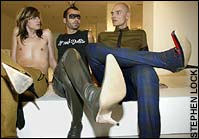
While women have for decades plundered the male
wardrobe, few men have been happy to embrace feminine
sartorial style.
But Rui Leonardes, a young shoe designer, took a step
towards balancing the score at the Royal College of Art's
MA Fashion Graduate show in London yesterday with a
collection of high heels for men.
His models teetered
down the catwalk in
six-inch, spike-heeled
stilettoes. The shoes,
ingeniously
constructed, were
hand-made in a mix
of leather, denim,
tweed, wool and bright
nylon to match various
suits and trousers.
One bright pink floral
pair came with a
matching jumpsuit.
"I wanted to question masculine stereotypes," said
Leonardes, originally from the Azores.
"I practised walking in them myself for two days. It's not
too bad. It's a bit like walking in cowboy boots, only
higher."
The models were not so sure. "I was certain I was going to
fall over," said Tilal Imani.
Thomas Donocik added: "They pinch your toes a bit, but I
don't mind. It's very rock 'n' roll."
Tibor Rohaly, a tutor in menswear technology at the RCA,
had just 15 minutes backstage to master the art of the
catwalk stiletto-strut when one of the male models was
pronounced incapable of walking without wobbling. Other
menswear collections featured variations on the skirt and
kilt, with Dracula cloaks and suiting recurrent favourites.
Womenswear tended to be warrior-like and the footwear
was generally practical and flat.
Stephanie Aman's collection featured chain-mail and silver
lace battle-tunics emblazoned with crusader crosses,
accessorised with knee-high gladiator boots.
Vrettos Vrettakos showed leather corsetry, seamed and
pleated like armour, with flimsy chiffon draperies and
Boadicea boots.
The Royal College of Art show, which featured the work of
29 MA graduates, brought the 2005 student fashion season
to a close.

The Perfect Fit: What Your Shoes Say about You
A woman's favorite pair of shoes is not merely an accessory, claims New
York writer and stiletto enthusiast Cleary, but actually a window into
her soul. The type of shoe that a woman wears can indicate her taste in
clothing, her career goals and even her ideal mate. In this pocket-sized
handbook, Cleary guides her readers through a "sole-searching" exercise
to discover their inner "Shoe sun sign," then profiles the typical personality
of each shoe type. For example, a flip-flop girl is "steady as a rudder,"
someone who "sparkles with the energy of being truly alive," while a woman
who feels most comfortable in a T-strap usually has a "natural gustiness
and Betty Boop-like cuteness." Filled with exhaustive puns like "sole-mate"
and "arch-supporter," the book is as cheesy as a teen fashion magazine,
and every bit as superficial. It is unlikely that a reader will learn anything
about themselves that they did not already know before picking it up, but
this breezy, illustrated giftbook will entertain those who love both fashion
and horoscopes, but knows not to take either too seriously.
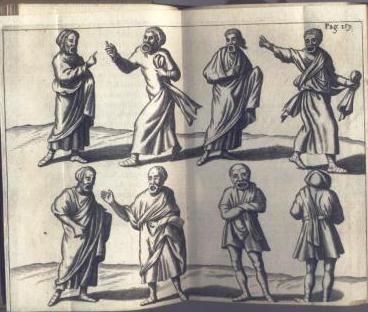
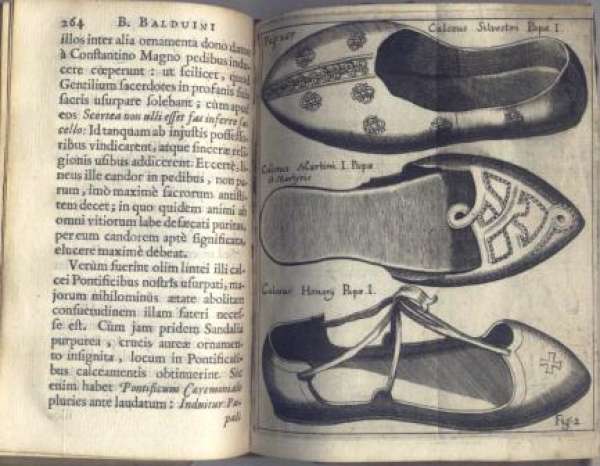
Amsterdam, Andreas Frisius, 1667. 28 engraved illustrations and one
inserted folding letterpress leaf with transcriptions of Roman inscriptions,
and decorative woodcut initials from three series. Contemporary vellum.
With the armorial Esterhazy-Plettenberg bookplate of Schloss Nordkirchen.
First edition of two works on the history of shoes from Adam to the author's
time drawing on references to shoes in classical texts, the bible and in
the law. With many quotes of classical, biblical and legal texts and numerous
illustrations of different shoes, from ice skates to papal shoes. Each
book with an index of authors cited such as Homer, Aristotle, Ovid, Martial
and St. Benedict. The title-page of the first work unambiguously includes
the second ("B. Balduinus de Claceo Antiquo et Jul. Nigronus de Caliga
Veterum") but the second work, with its own pagination and signatures,
also has its own title-page for separate publication ("Juli Nigroni Genuensis
de Caliga Veterum dissertatio subseciva"). Constantijn Huygens owned a
copy of the Balduinus, presumably also bound with the Nigronus.
 In
1938 archaeologist Luther Cressman (from the University of Oregon) excavated
at Fort Rock Cave, located in a small volcanic
In
1938 archaeologist Luther Cressman (from the University of Oregon) excavated
at Fort Rock Cave, located in a small volcanic
 The Foot
The Foot
 Fort
Rock sandals are stylistically distinct. They are twined (pairs of weft
fibers twisted around warps), and have a flat, close-twined sole, usually
with five rope warps. Twining proceeded from the heel to the toe, where
the warps were subdivided into finer warps and turned back toward the heel.
These fine warps were then open-twined (with spaces between the weft rows)
to make a toe flap. Cressman surmised that a tie rope attached to one edge
of the sole wrapped around the ankle and fastened to the opposite edge.
Fort
Rock sandals are stylistically distinct. They are twined (pairs of weft
fibers twisted around warps), and have a flat, close-twined sole, usually
with five rope warps. Twining proceeded from the heel to the toe, where
the warps were subdivided into finer warps and turned back toward the heel.
These fine warps were then open-twined (with spaces between the weft rows)
to make a toe flap. Cressman surmised that a tie rope attached to one edge
of the sole wrapped around the ankle and fastened to the opposite edge.

 On
September 19th, 1991, Helmut and Erika Simon, a couple from Nuremberg mountaineering
in the Ötztal Alps at a height of 3200 m discovered a
On
September 19th, 1991, Helmut and Erika Simon, a couple from Nuremberg mountaineering
in the Ötztal Alps at a height of 3200 m discovered a  corpse,
the upper part of which protruded from the glacier. The well-preserved
body of a 30-to-45-year old man affectionately dubbed "Oetzi" for his resting-place
in the Oetz Valley, near the border with Austria in the Italian Alps, was
in a state of near perfect preservation. Oetzi was eventually dated to
3350-3300 BC (late Neolithic). The man of the ice wore shoes on his feet.
They consisted of an oval leather sole with turned-up edges held
in place with a leather thong. The soles are made of cowhide attached to
straps of a net like construction of knotted grass cords. A net woven out
of grass was attached to this on the inside to hold in place the hay that
was stuffed inside (like socks) as protection against the cold. The shoe
was closed with deer leather uppers attached to the sole by a plain-stitched
leather thong. The linden bark netting covered the tab on the leggin thus
holding the two together. Attached to the sole are upper pieces of leather,
presumably of fur, which formed the boot shape, tied at the ankle with
grass cords.Whereas the sole of the shoe is made of brown bear skin, the
uppers are made of deerskin. The uppers were closed using "shoe-laces".
He is now in the South Tyrol Museum in Bolzano in a special cold storage
chamber (kept at constant 0 to -6 C) .
corpse,
the upper part of which protruded from the glacier. The well-preserved
body of a 30-to-45-year old man affectionately dubbed "Oetzi" for his resting-place
in the Oetz Valley, near the border with Austria in the Italian Alps, was
in a state of near perfect preservation. Oetzi was eventually dated to
3350-3300 BC (late Neolithic). The man of the ice wore shoes on his feet.
They consisted of an oval leather sole with turned-up edges held
in place with a leather thong. The soles are made of cowhide attached to
straps of a net like construction of knotted grass cords. A net woven out
of grass was attached to this on the inside to hold in place the hay that
was stuffed inside (like socks) as protection against the cold. The shoe
was closed with deer leather uppers attached to the sole by a plain-stitched
leather thong. The linden bark netting covered the tab on the leggin thus
holding the two together. Attached to the sole are upper pieces of leather,
presumably of fur, which formed the boot shape, tied at the ankle with
grass cords.Whereas the sole of the shoe is made of brown bear skin, the
uppers are made of deerskin. The uppers were closed using "shoe-laces".
He is now in the South Tyrol Museum in Bolzano in a special cold storage
chamber (kept at constant 0 to -6 C) .
 They
have constructed three pairs of animal skin shoes that replicate those
worn by Ötzi. Three members of the research team will visit an area
near Ötzi's discovery site, put on the replicas, and take a two-hour
hike. The shoes will be removed and studied. Afterwards, researchers intend
to donate them to an unnamed museum. The task of making replicas of his
shoes was not easy. Besides analyzing the various materials used to construct
the original shoes, researchers had to determine how the Iceman (or his
shoemaker) cut and tanned the skins. They also wondered whether the dried
grass still grew in the region. Analysis revealed that fats from animal
brains and livers were used to make the tanning solution, that a flint
rock was used to cut the skins, and that the same grass still grows. These
details were used in constructing the replicas.
They
have constructed three pairs of animal skin shoes that replicate those
worn by Ötzi. Three members of the research team will visit an area
near Ötzi's discovery site, put on the replicas, and take a two-hour
hike. The shoes will be removed and studied. Afterwards, researchers intend
to donate them to an unnamed museum. The task of making replicas of his
shoes was not easy. Besides analyzing the various materials used to construct
the original shoes, researchers had to determine how the Iceman (or his
shoemaker) cut and tanned the skins. They also wondered whether the dried
grass still grew in the region. Analysis revealed that fats from animal
brains and livers were used to make the tanning solution, that a flint
rock was used to cut the skins, and that the same grass still grows. These
details were used in constructing the replicas.
 Sandal, 8000 BC
Sandal, 8000 BC Soft
boots 500 AD
Soft
boots 500 AD
 Poulaine 1200
Poulaine 1200 Duck's
Bill 1500
Duck's
Bill 1500
 Slippers
1700
Slippers
1700 High-heel 1800
High-heel 1800
 1920
1920 1950
1950
 1960
1960 1970
1970
 Australian Aboriginal sandals
made from Emu feathers
Australian Aboriginal sandals
made from Emu feathers

 Andy
Warhol was born Andrew Warhola in Pittsburgh, Pennsylvania, as the son
of immigrants from Ruthenia, where the current boundaries of Poland, Slovakia,
Hungary, Romania and the Ukraine meet. His father, Andrej, who travelled
much on business trips, died when Warhol was 13. When he was eight (1936),
according to his mother Julia, he caught rheumatic fever which developed
into chorea (or St
Vitus Dance). In the quixotic Philosophy, he calls it a nervous
breakdown. One should remember, when trying to take his books at face value,
that he didn't entirely write them, and that he was a liar.) Biographer
Bockris reports that Andy came down with chorea in the autumn of 1938,
and that illness kept him away from school, an invalid at his mother's
side; he occupied a bed off the kitchen for a month. Symptoms of chorea
included skin blotches and uncontrolled shaking. Both echoed in Warhol's
future, and though he left no direct verbal commentary about what it felt
like to shake or to endure dermatological disfigurement, in his mature
artworks he refracted these experiences, letting stigma reverberate in
painting, film, and performance. Tese later artistic recastings of St.
Vitus' Dance represent childhood trauma's consummation, cancellation, and
vindication. He found it difficult to control his hand to write or draw
and was forced to stay in bed for a month. During this time, his mother
provided him with a steady supply of coloring and comic books, magazines,
and paper dolls, which enabled him to continue his art-making despite his
condition. While incapacitated he played with a Charlie McCarthy doll and
made paper cutouts, cultivating early the propensity for fantasy which
characterized his personality, Besides altering his birth date and name,
Warhol underwent plastic surgery in the 50's to trim his bulbous, red nose
but was angered when the operation failed to lend him the glamour he so
desperately desired. Also at this time he began dreaming of being a Hollywood
star and even wrote to some of his favorite celebrities. He was an albino,
with blotchy skin, and was taunted as Spot by his schoolmates. He had linguistic
problems stemming from his home environment. At college his fellow students
thought he had "a childlike duality about him". He was still living with
his mother until the early '70s.
Andy
Warhol was born Andrew Warhola in Pittsburgh, Pennsylvania, as the son
of immigrants from Ruthenia, where the current boundaries of Poland, Slovakia,
Hungary, Romania and the Ukraine meet. His father, Andrej, who travelled
much on business trips, died when Warhol was 13. When he was eight (1936),
according to his mother Julia, he caught rheumatic fever which developed
into chorea (or St
Vitus Dance). In the quixotic Philosophy, he calls it a nervous
breakdown. One should remember, when trying to take his books at face value,
that he didn't entirely write them, and that he was a liar.) Biographer
Bockris reports that Andy came down with chorea in the autumn of 1938,
and that illness kept him away from school, an invalid at his mother's
side; he occupied a bed off the kitchen for a month. Symptoms of chorea
included skin blotches and uncontrolled shaking. Both echoed in Warhol's
future, and though he left no direct verbal commentary about what it felt
like to shake or to endure dermatological disfigurement, in his mature
artworks he refracted these experiences, letting stigma reverberate in
painting, film, and performance. Tese later artistic recastings of St.
Vitus' Dance represent childhood trauma's consummation, cancellation, and
vindication. He found it difficult to control his hand to write or draw
and was forced to stay in bed for a month. During this time, his mother
provided him with a steady supply of coloring and comic books, magazines,
and paper dolls, which enabled him to continue his art-making despite his
condition. While incapacitated he played with a Charlie McCarthy doll and
made paper cutouts, cultivating early the propensity for fantasy which
characterized his personality, Besides altering his birth date and name,
Warhol underwent plastic surgery in the 50's to trim his bulbous, red nose
but was angered when the operation failed to lend him the glamour he so
desperately desired. Also at this time he began dreaming of being a Hollywood
star and even wrote to some of his favorite celebrities. He was an albino,
with blotchy skin, and was taunted as Spot by his schoolmates. He had linguistic
problems stemming from his home environment. At college his fellow students
thought he had "a childlike duality about him". He was still living with
his mother until the early '70s.
 Shoes, shoes, shoes (book cover)
Shoes, shoes, shoes (book cover)
 Andy Warhol Pump
Andy Warhol Pump


 mosaics
mosaics
 (book
cover)
(book
cover)
 "High Heel Shoes
#1 & #2" (32x31x14) & (32x28x13), welded aluminum
"High Heel Shoes
#1 & #2" (32x31x14) & (32x28x13), welded aluminum
 "High Heel Shoe
#4" (39x27x16), steel & enamel
"High Heel Shoe
#4" (39x27x16), steel & enamel
 Shoe #4 at home
in Indian Wells, California
Shoe #4 at home
in Indian Wells, California
 "wearable" high
heel shoes in stainless steel
"wearable" high
heel shoes in stainless steel
 Matthew
& Mary Lovein
Matthew
& Mary Lovein 3 Foot Shoe private
collection, 36x29x12"
3 Foot Shoe private
collection, 36x29x12"
 Spikey 26x17x10.5"
metal work
Spikey 26x17x10.5"
metal work
 Stepping
into the Millennium, 48" vase
Stepping
into the Millennium, 48" vase  Boot safe
Boot safe
 Lacy, metal wall
sculpture
Lacy, metal wall
sculpture  Shoe Stand
Shoe Stand 
 American Shoes,
giclee on canvas
American Shoes,
giclee on canvas
 "Ice Cream
Heels", Limited edition print
"Ice Cream
Heels", Limited edition print Proposal, giclee on canvas
Proposal, giclee on canvas
 Look Down
in Color, monotype
Look Down
in Color, monotype
 Reflection
, giclee
Reflection
, giclee

 Red glass shoe
Red glass shoe
 Blue glass shoe
Blue glass shoe
 Silk covered
tea box
Silk covered
tea box
 Blue
Descending Heels, fused glass bowl
Blue
Descending Heels, fused glass bowl
 Glass slipper
Glass slipper
 Da Vine, glass
Da Vine, glass
 Petroglyph
high heel, rock
Petroglyph
high heel, rock
 Sunset Boot, 3D
with oil paint
Sunset Boot, 3D
with oil paint
 Blue Man
Shoe
Blue Man
Shoe
 Silver Shoes (1976-77)
Silver Shoes (1976-77)



 1999
1999
 2002
2002
 Shoe
(Roman sandal), University of Stirling, Scotland
Shoe
(Roman sandal), University of Stirling, Scotland


 Holy Feet
Holy Feet
































 "This
museum is making a subject of notoriety into an object of beauty," Mrs
Marcos told reporters.
"This
museum is making a subject of notoriety into an object of beauty," Mrs
Marcos told reporters.















 European size 217 men's shoe by Jozsef
Kovacs
European size 217 men's shoe by Jozsef
Kovacs





